Z490 AORUS PRO AX Motherboard Review 2022
GIGABYTE is among the leading high-end PC components manufacturers venturing in multiple other related categories like server products. Their AORUS Gaming brand was created for the PC enthusiasts out there who would want to have some brand association as well as powerful and stylish gaming products.
GIGABYTE has also ventured into the PC peripheral and doing so by achieving the AORUS ecosystem. It also has non-arous boards, such as the Z370 HD3, which we reviewed.
Table of Contents
In this article, we are taking a look at the mid-range or what I would like to say upper mid-range offer from the GIGABYTE in the form of Z490 AORUS PRO Review which boasts a multitude of features, adequate thermal cooling, aggressive power design with the stylish outlook for which AORUS designers have gone back to the drawing board.
Here are some of the features of GIGABYTE Z490 AORUS PRO AX. By the way, if you are into new 12th Generation processors, check out our Z690 Motherboards Review. Similarly, If you don’t like GIGABYTE, go for MSI Z490 Motherboard.
- Supports 10th Gen Intel® Core™ Processors and 11th Gen Intel® Core™ Processors*
- Dual Channel Non-ECC Unbuffered DDR4, 4 DIMMs
- Intel® Optane™ Memory Ready
- Direct 12+1 Phases Digital VRM Solution with 55A DrMOS
- Shielded Memory Routing for Better Memory Overclocking
- Fins-Array II Heatsink and Direct Touch Heatpipe II
- Onboard Intel® WiFi 6 802.11ax 2T2R & BT5 with AORUS Antenna
- AMP-UP Audio with ALC1220-VB and WIMA for Rear 120dB SNR
- Blazing Fast Intel® 2.5GbE LAN with cFosSpeed
- Dual Ultra-Fast NVMe PCIe 3.0 x4 M.2 with Thermal Guards
- RGB FUSION 2.0 with Multi-Zone Addressable LED Light Show Design, Support Addressable LED & RGB LED Strips
- Smart Fan 5 Features Multiple Temperature Sensors, Hybrid Fan Headers with FAN STOP
- Q-Flash Plus Update BIOS without Installing the CPU, Memory, and Graphics Card
- Product: Z490 AORUS PRO AX
- Manufacturer: GIGABYTE
- Price: Check Price on Amazon
Z490 AORUS PRO AX Packaging and Unboxing
The motherboard is shipped inside a cardboard-based packing box.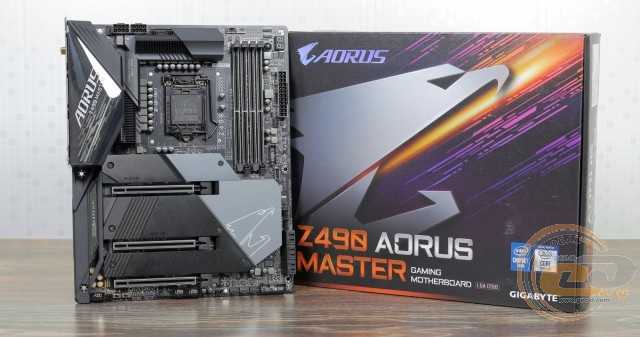
Z490 AORUS PRO Review is printed showing the model of the motherboard in question. The motherboard supports the Intel Z490 chipset on 10th generation Core i CPUs on the LGA1200 socket.
There is a picture of the motherboard along with the diagram of the rear IO panel. The motherboard is using 12+1 Phases Digital VRM Solution with DrMOS cooled by advanced thermal design using Fins-Array II with pre-applied 5 W/mK LAIRD thermal pads. Other features are also highlighted. The major specifications of the motherboard are printed in a tabular format.
The features of the motherboard are printed in 18 languages.
The motherboard model and supported socket/chipset are printed.
Z490 Aorus Pro Review is enclosed in an anti-static transparent container and is placed in a container above the accessories.
Z490 Motherboard Box Contents
These include:
- 1x Motherboard
- 1x WiFi Antenna
- 1x G Connector
- 1x Installation Disk
- 1x User Manual
- 1x Installation Guide
- 1x Metal Badge
- 4x SATA Cables
- 1x RGB Extension Cable
- 2x Thermal Probe cables
GIGABYTE Z490 Closer Look
The GIGABYTE Z490 AORUS PRO Review packs powerful 12+1 Phases digital VRM with DrMOS, Fins-Array II, Dual PCIe M. 2 with Thermal Guards, Intel® WiFi 6 AX201, Intel® 2.5 GbE LAN with USB Type-C, RGB Fusion 2.0, and a plethora of utilities and applications. This Z490 AORUS PRO Review has an integrated I/O shield which is another common becoming trend from the various manufacturers and to please the user with a backlit shroud. It is time to take a closer look at the PCB of the motherboard and its layout. Let’s take a look at the motherboard.
2 with Thermal Guards, Intel® WiFi 6 AX201, Intel® 2.5 GbE LAN with USB Type-C, RGB Fusion 2.0, and a plethora of utilities and applications. This Z490 AORUS PRO Review has an integrated I/O shield which is another common becoming trend from the various manufacturers and to please the user with a backlit shroud. It is time to take a closer look at the PCB of the motherboard and its layout. Let’s take a look at the motherboard.
The picture is showcasing a glimpse of what the GIGABYTE Z490 AORUS PRO Review has to offer.
The motherboard has mostly a blackish color accent making it a perfect candidate for any color build. The stenciling is mostly in gray and black colors. There is a silver-colored Falcon stenciling on the chipset cover which looks good in an overall symphony of the design.
We have 4x DIMM slots for DDR4 RAM, 5x PCIe 3.0 slots at X16/X8/X4/X1, 6x SATA ports, Thunderbolt port, USB 2.0 ports, USB Type-C, USB 3.1 Gen 1, USB 3.2 ports, onboard audio solution driven by Realtek ALC1220-VB, Intel 2.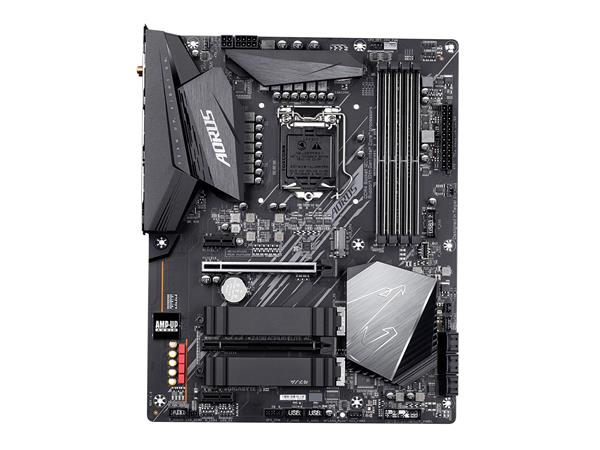 5 GbE NIC, on-board WiFi 6 AX201 solution and nice handy I/O connectivity options. The PCB has an ATX form factor measuring 30.5cmX24.4cm and has support for Microsoft Windows 10 x64.
5 GbE NIC, on-board WiFi 6 AX201 solution and nice handy I/O connectivity options. The PCB has an ATX form factor measuring 30.5cmX24.4cm and has support for Microsoft Windows 10 x64.
Let’s start with taking a look at the board from the top side.
The GIGABYTE Z490 AORUS PRO AX Gaming motherboard has an Intel LGA1200 socket. The socket is using Tantalum capacitors for better efficiency in handling transient loads.
There is a small arrow indicator on the socket’s cover indicating the corner to which the arrow marked side of the CPU has to be aligned. The Intel LGA1200 on The GIGABYTE Z490 AORUS PRO Review supports Intel 10th and the upcoming 11th generation of Core i series CPUs. The motherboard comes with an HDMI port supporting a maximum resolution of 4096×[email protected] Hz with a maximum shared memory of 512MB. The HDMI port is 1.4 version and HDCP 2.3.
The shroud on the VRM heatsink and rear I/O is stylish, bold, aggressive, and bodes well with the overall layout of the motherboard.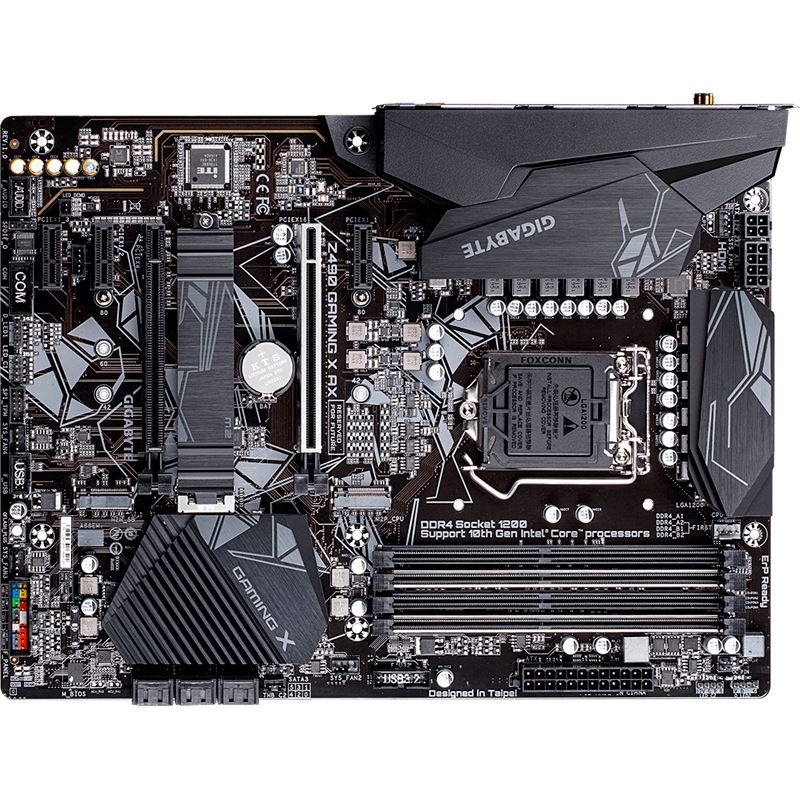 The shroud itself is made of plastic and it has RGB LEDs underneath. The shroud is secured to the PCB using three screws from the backside.
The shroud itself is made of plastic and it has RGB LEDs underneath. The shroud is secured to the PCB using three screws from the backside.
The above picture shows the heatsink covering the power delivery components on the motherboard.
GIGABYTE has gone all out on the VRM design and its cooling in the AORUS family which is similar to what we have seen in the Z390 series. All of their motherboards in this line pack almost similar VRM design and cooling and the Z490 AORUS PRO Review is no exception to that.
There are two black color coated aluminum heatsinks with multiple cut-outs to increase the surface area for effective heat dissipation. Fins-Array II uses a new louvered stacked-fins design which not only increases surface area by 300% compared to traditional heatsinks but also improves thermal efficiency with better airflow and heat exchange.
Both heatsinks are connected using an 8mm heat pipe with a reduced gap between the assembly and the heat pipe.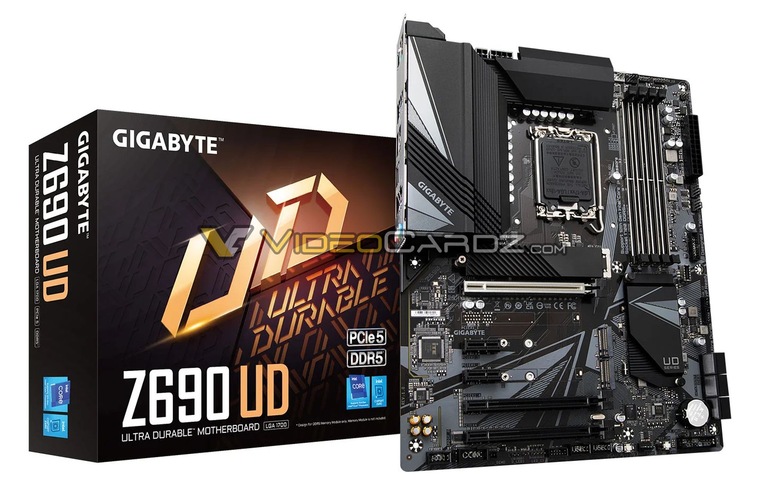 The GIGABYTE has used 1.5mm thick thermal pads rated for 5 W/mK thermal conductivity, between the important contact points on the PCB and the heatsinks thus ensuring there is no corner left unchecked when it comes to providing a powerful cooling solution for the MOSFETs.
The GIGABYTE has used 1.5mm thick thermal pads rated for 5 W/mK thermal conductivity, between the important contact points on the PCB and the heatsinks thus ensuring there is no corner left unchecked when it comes to providing a powerful cooling solution for the MOSFETs.
GIGABYTE Z490 AORUS PRO Review employs 12+1 Digital Power Phases with DrMOS each capable of providing up to 55A of power from each phase. The 12+1 power design is actually using doubles to achieve the power delivery target. 1 phase is for the SOC.
GIGABYTE employs Intersil ISL69269 PWM controller.
The GIGABYTE Z490 AORUS PRO AX employs SiC620A doublers for 12 power phases with each capable of providing 55A.
As mentioned above, the GIGABYTE Z490 AORUS PRO AX is using Tantalum capacitors. The array of these polymer capacitors the transient response and stability is improved under overclocking and heavy load.
GIGABYTE’s exclusive 2X Copper PCB design provides sufficient power trace paths between components to handle greater than normal power loads and to remove heat from the critical CPU power delivery area. This is essential to ensure that the motherboard is able to handle the increased power loading that is necessary when overclocking.
This is essential to ensure that the motherboard is able to handle the increased power loading that is necessary when overclocking.
The 8+4 power connectors to power the CPU are located on the top left most side. The provision of extra 4-pins is for the Intel Core i9 10900 and 10850 variants which would require more power during overclocking. There is a 4-pin PWM hybrid Fan Header as well.
The GIGABYTE Z490 AORUS PRO Review features solid plated ATX 24pin & ATX 12V 8pin + 4pin power connectors to offer a stable power supply. This is advantageous as there is a larger contact area for the electricity with more metal quantity to sustain the higher power and heat.
There are 4 stainless steel reinforced DIMM slots on the GIGABYTE Z490 AORUS PRO AX Gaming motherboard. These are in the Dual Channel configuration. The maximum capacity is 128GB with 32GB per DIMM slot and the maximum supported frequency is 5000 MT/s (OC).
Z490 AORUS PRO Review supports ECC Un-buffered DIMM 1Rx8/2Rx8 memory modules (operate in non-ECC mode) as well non-ECC Un-buffered DIMM 1Rx8/2Rx8/1Rx16 memory modules.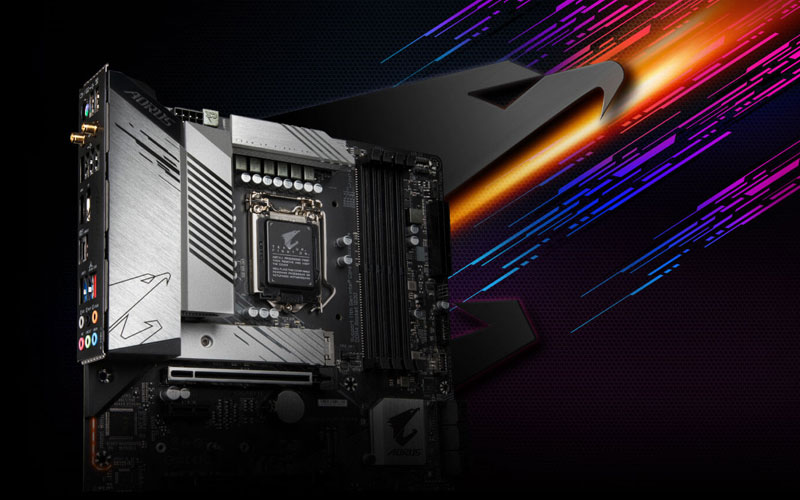 The good design aspect is that all memory routing is under the PCB inner layer shielded by a large ground layer to protect from external interference.
The good design aspect is that all memory routing is under the PCB inner layer shielded by a large ground layer to protect from external interference.
Since we are at it, there is a Realtek RT8120D for a single-phase PWM with a driver. For that, we have MOSFET configuration in the solution of 3 On Semiconductor 4C06N in a two-low one-high. We saw the same design on the Z390 AORUS PRO WIFI motherboard.
Let’s take a look at the top side’s connectivity provisions.
Starting from the right side, there is a 12V RGB header below which we have a digital RGB header. Each header has a clear label identifying which header is for what type of lighting.
Next, we have CPU_OPT and CPU_FAN headers. Another striking feature on the AORUS line of the motherboards is that every header is a hybrid one and utilizes PWM control. Each fan header is controlled by a nuvoTon 3947S PWM controller.
We have a solid pin 24-pin ATX connector, a USB 3.2 Gen-1 header, and a USB 3. 2 Gen-1 Type-C header.
2 Gen-1 Type-C header.
We have 3-pin and 5-pin thunderbolt Add-In headers. The Thunderbolt Add-In card is not included and needs to be purchased separately if needed.
There are 6x SATA ports rated at 6 Gbps located on the lower right side of the motherboard. This Z490 AORUS PRO Review supports RAID 0, RAID 1, RAID 5, and RAID 10.
We have 4 LED indicators for VGA, CPU, BOOT, DRAM marking printed at the bottom. This is the troubleshooting mechanism provided on this Z490 AORUS PRO motherboard. Each of these 4 LEDs is dedicated to the VGA, CPU, BOOT, and DRAM.
In case of any issue or error, the corresponding LED will lit up continuously until the problem is resolved. This is my complaint area. There is a thunderbolt header yet no debug LED! AORUS what’s up!
Let’s take a look at the connectivity options located at the base of the motherboard.
Starting from the right side, we have a system panel connector.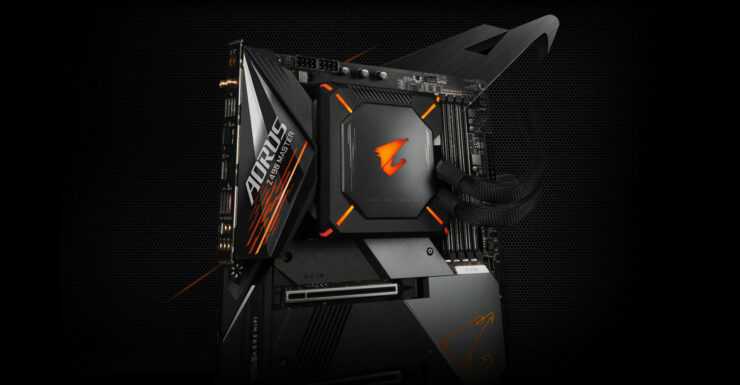 The base of the pins is color-coded for ease of identification and the corresponding configuration is labeled below the connector. Gigabyte has provided a G Connector which allows the user to easily connect the chassis front panel cables to this connector and then simply connect it to the front panel connector of the motherboard.
The base of the pins is color-coded for ease of identification and the corresponding configuration is labeled below the connector. Gigabyte has provided a G Connector which allows the user to easily connect the chassis front panel cables to this connector and then simply connect it to the front panel connector of the motherboard.
There is a 2-pin header right on the top of the system panel connector which is called Clear CMOS jumper. The user can use this header to reset the CMOS. In order to do that, power off your PC and touch both pins at a time using the tip of a screwdriver which will short the circuit. On the next boot cycle, the BIOS would be reset to its default settings.
On the left side of the front panel connector, there are 3x 4-pin hybrid fan headers. The rightmost header is for the pump.
There is a Q-Flash Plus button located after the fan headers. There is a dedicated USB port on the rear panel. The user can update the BIOS without using the CPU by simply downloading the BIOS file from the website.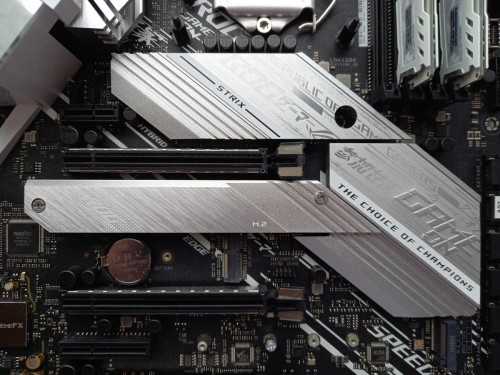 Rename it to Gigabyte.bin and copy it into the FAT32 formatted USB drive. Connect the drive to the designated USB port and press the Q-Flash button. Please note that you would still need to connect the 24-pin ATX and EPS connectors.
Rename it to Gigabyte.bin and copy it into the FAT32 formatted USB drive. Connect the drive to the designated USB port and press the Q-Flash button. Please note that you would still need to connect the 24-pin ATX and EPS connectors.
Next, we have two 9-pin USB 2.0 headers followed by a TPM header. Next, we have two lighting headers. The first one is +12V and the next one is +5V followed by the Demo LED and in the last, there is an HD Audio header to which the chassis’ front panel audio cable is connected which is optional though.
The GIGABYTE Z490 AORUS PRO AX Gaming Motherboard features a full-length chipset cover finished in an elegant manner with colorful stenciling using black, gray, and silver colors. There is a Falcon logo on the lower left side of the shroud. There are no RGB LEDs under the cover.
The above picture shows the Intel Z490 chipset after taking the cover off.
Gigabyte z490 USB Ports
Following USB connectivity options are present on the GIGABYTE Z490 AORUS PRO AX Gaming Motherboard:
Coming from the Chipset:
- 1 x USB Type-C™ port on the back panel, with USB 3.
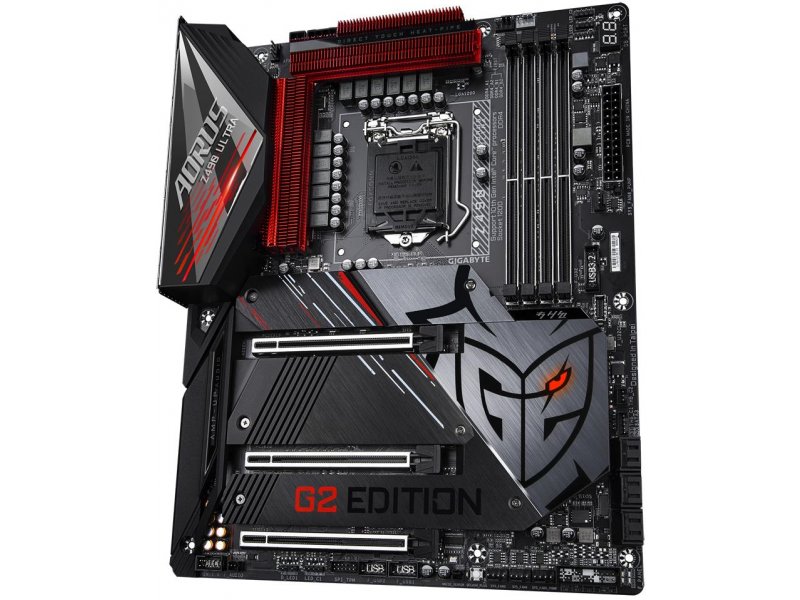 2 Gen 2 support
2 Gen 2 support - 1 x USB Type-C™ port with USB 3.2 Gen 1 support, available through the internal USB header
- 2 x USB 3.2 Gen 2 Type-A ports (red) on the back panel
- 5 x USB 3.2 Gen 1 ports (3 ports on the back panel, 2 ports available through the internal USB header)
Chipset+2 USB 2.0 Hubs:
8 x USB 2.0/1.1 ports (4 ports on the back panel, 4 ports available through the internal USB headers)
PCIe Slots
GIGABYTE has mentioned that this Z490 AORUS PRO Review has PCIe 4.0 ready PCB and circuitry. They have implemented a PCIe 4.0 turbo b-clocker above the PCIe slots. This is what I have mentioned in the introduction that Comet Lake is not PCIe 4.0 ready but this socket will support the 11th gen chips which are expected to be using PCIe 4.0. T
his has left a little room for the vendors to implement PCIe 4.0 support on the Comet Lake platform. Much we are seeing a hybrid design otherwise there was only one choice out of two; either the motherboard supports PCIe 4.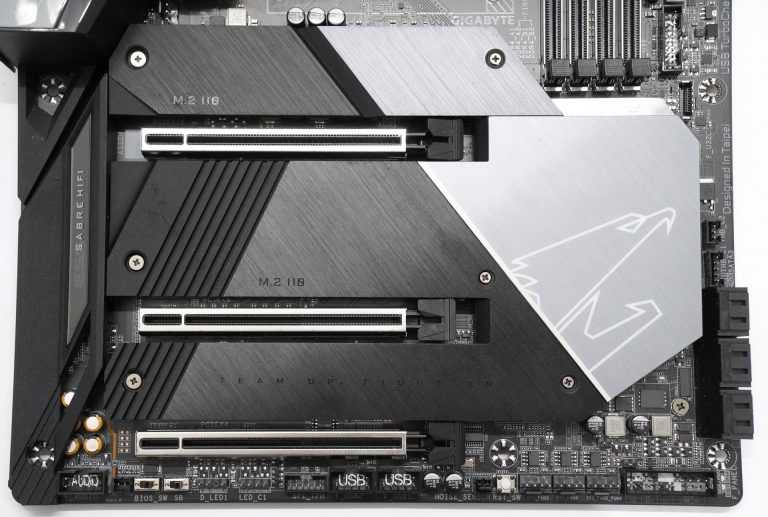 0 or not. This Z490 AORUS PRO motherboard has a total of 5x PCIe slots.
0 or not. This Z490 AORUS PRO motherboard has a total of 5x PCIe slots.
The top slot is electrically wired to the CPU socket. PCIe slots have higher slot signal stability and lower impedance, maximizing PCIe bandwidth. Here is the configuration information of these slots:
- 1 x PCI Express x16 slot, running at x16 (PCIEX16) For optimum performance, if only one PCI Express graphics card is to be installed, be sure to install it in the PCIEX16 slot.
- 1 x PCI Express x16 slot, running at x8 (PCIEX8) The PCIEX8 slot shares bandwidth with the PCIEX16 slot. When the PCIEX8 slot is populated, the PCIEX16 slot operates at up to x8 mode.
- 1 x PCI Express x16 slot, running at x4 (PCIEX4)
- 2 x PCI Express x1 slots
SLI/CF Support
- Support for NVIDIA® Quad-GPU SLI™ and 2-Way NVIDIA® SLI™ technologies
- Support for AMD Quad-GPU CrossFire™ and 2-Way AMD CrossFire™ technologies
The top two slots are PCIe 4.0 ready. The PCIe X16 and X8 slots are stainless steel armor reinforced on the outer shell. These brackets feature a double locking mechanism; first from the top and the second from the bottom for better retention. We have a row of 4x switches below the top PCIe slot to convert x16x into x8/x8. The bottom row is of the PCIe 4.0 Re-Drivers to strengthen the signals to longer lengths.
These brackets feature a double locking mechanism; first from the top and the second from the bottom for better retention. We have a row of 4x switches below the top PCIe slot to convert x16x into x8/x8. The bottom row is of the PCIe 4.0 Re-Drivers to strengthen the signals to longer lengths.
Gigabyte z490 M.2 Port
The GIGABYTE Z490 AORUS PRO AX Gaming motherboard has two M.2 ports using PCIe Gen 3 interface.
The top M.2 port seems to have been reserved for future use. It has a warning sticker on it cautioning the user about the limited functionality which is probably due to the RAID settings on the shared resources with SATA ports. It is better to use the M.2 ports under the cover.
Both M.2 ports have thermal shields with pre-applied thermal pads on them. 2 x M.2 connectors have socket 3, M key, type 2242/2260/2280/22110 SATA, and PCIe x4/x2 SSD support. They are labeled as M2A_SB and M2M_SB.
The M2A port shared bandwidth with the SATA3 1 connector and the M2M port shares bandwidth with the SATA3 4 and 5 connectors.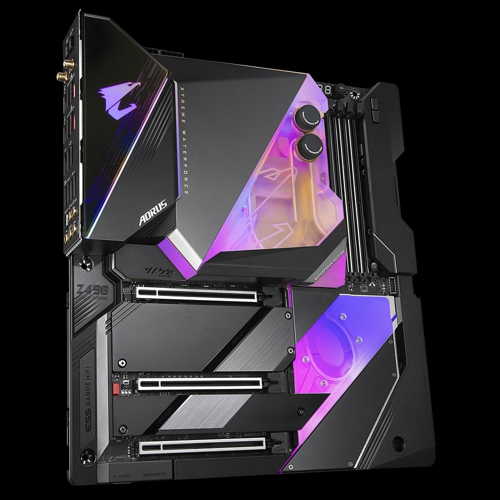 Refer to the picture for the overall scenario of bandwidth sharing and resulting nonavailability of SATA3 connectors.
Refer to the picture for the overall scenario of bandwidth sharing and resulting nonavailability of SATA3 connectors.
Both M.2 ports have thermal covers on the top with pre-applied thermal pads to ensure the cool temperature on the drives.
Gigabyte z490 Audio
The GIGABYTE Z490 AORUS Pro WiFi Gaming motherboard is using Realtek High-End HD Audio Codec ALC1220 120dB(A) SNR [110/114 dB(A)] HD Audio using VB Series audio controller. With Smart Headphone Amp it automatically detects impedance of the head-worn audio device, preventing issues such as low volume and distortion.
This Z490 AORUS PRO motherboard is using a combination of Hi-Fi grade WIMA FKP2 capacitors and high-end Chemicon audio capacitors. While the high-end audio capacitors are suited for high-grade audio equipment, using state of the art technology to provide rich sound in the bass and clearer high frequencies, the WIMA FKP2 capacitors are being used widely in premium grade Hi-Fi systems.
The addition of this to the exclusive AOURS AMP-UP Audio technology makes for the ideal onboard sound solution for the most demanding audiophiles. The audio section is implemented on a dedicated layered PCB. The audio solution is backed by 4 high-end Hi-Fi grade WIMA KFP2 Capacitors. These high-quality capacitors help deliver high resolution and high fidelity audio to provide the most realistic sound effects for gamers.
LED trace path lighting Illuminates to show the separation of the PCB layers. Channel support is 2/4/5.1/7.1 and S/PDIF Out is supported as well.
Gigabyte Z490 Networking
The above picture shows the CNVi controller module installed on the Rear IO panel for WiFi 6 201AX connectivity. To which end GIGABYTE has provided an Antennae.
All new antenna supports WIFI a, b, g, n, ac with wave 2 features, ax, supporting 2.4/5 GHz Dual-Band. It supports tilting and a magnetic base. Moreover, Bluetooth 5.1 provides a better range than the previous BT protocol with faster transmission. The wireless solution supports for 11ax 160MHz wireless standard and up to 2.4 Gbps data rate.
The GIGABYTE Z490 AORUS PRO AX Gaming Motherboard is using Intel 2.5 GbE NIC. Adoption of 2.5G LAN provides up to 2.5 GbE network connectivity, with at least two times faster transfer speeds compared to general 1GbE networking. It’s perfectly suited for gamers and streamers with the ultimate and smooth online experience. It also backward compatible with Multi-Gig(10/100/1000/2500Mbps) RJ-45 Ethernet.
CMOS Chip
This board has 1x 128 Mbit flash using licensed AMI UEFI BIOS. PnP 1.0a, DMI 2.7, WfM 2.0, SM BIOS 2.7, ACPI 5.0 are supported.
Thermal Monitoring and Cooling Solution
Now, it is time to take a look at the cooling provision on the GIGABYTE Z490 AORUS PRO AX Gaming Motherboard.
The above picture shows the thermal sensors and fan headers provision on the GIGABYTE Z490 AORUS PRO AX Gaming motherboard. This Z490 AORUS PRO motherboard comes with:
- 8 Fan / Water Pump Connectors
- 7 Temperature Sensors
- 2 External Temperature Sensors
The GIGABYTE Z490 AORUS PRO AX Gaming motherboard comes with 7 sensors installed on the PCB. The GIGABYTE has provided two 2-pin sensor headers as shown as in the green color. There are two Pump/AIO headers which are 4-pin. All of these headers are hybrid in nature. The user can control these headers either through the UEFI/BIOS using the Smart Fan 5 utility or through the SIV utility from Windows. Please, note that for SIV you will also need to have the APP Center application installed first.
The GIGABYTE has provided two 2-pin sensor headers as shown as in the green color. There are two Pump/AIO headers which are 4-pin. All of these headers are hybrid in nature. The user can control these headers either through the UEFI/BIOS using the Smart Fan 5 utility or through the SIV utility from Windows. Please, note that for SIV you will also need to have the APP Center application installed first.
Back I/O Panel
- 1 x USB Type-C™ port, with USB 3.2 Gen 2 support
- 2 x USB 3.2 Gen 2 Type-A ports (red)
- 3 x USB 3.2 Gen 1 ports
- 4 x USB 2.0/1.1 ports
- 2 x SMA antenna connectors (2T2R)
- 1 x HDMI port
- 1 x RJ-45 port
- 1 x optical S/PDIF Out connector
- 5 x audio jacks
Here is the picture of the motherboard’s backside.
BIOS
Though GIGABYTE has been improving the user interface on their UEFI/BIOS, it is still not as good as the one provided by ASUS or MSI but spending a bit of time alone will get you going.
The Favorites section keeps a listing of your favorite marked items. It is for conveniently accessing the most commonly used settings from a single window.
The first section is the Tweaker. This is the main section covering every aspect of the CPU and DRAM ranging from the frequency to core ratio to voltages and whatnot. It has been categorized in Frequency, Voltage, and Memory Settings. CPU Base Clock, Core Ratio, Uncore Ratio, and XMP settings are located here.
Clicking on Advanced CPU Core Settings will load another page with a plethora of controlling options for the advanced users. Here you can find settings for Speed Shift Technology, EIST Function, Turbo Boost and Turbo Boost Max Technology 3.0, and various other CPU related settings.
Clicking on the Advanced Memory Settings Memory related settings. From here you can control the DRAM timings on the subsequent pages.
The user can control every aspect of the primary, secondary, tertiary, and other timings of the DRAM.
The SPD Info shows another window with loading the SPD info for each of the DIMM slots. It will only show the data of the populated slots.
There is an Advanced power/voltage setting link under the Tweaker section which will take you to further voltage related settings for some fine granular control over the voltages. The last setting here is the CPU/VRM one.
Clicking the CPU/VRM will load more options. You can set the Load Line Calibration and power protection settings here.
The Settings section has various platform-related settings like Smart Fan 5, PCIe, Storage, and power-related settings.
This is where you can decide how the system should respond upon power restoration. You can set the PC to start automatically as soon as it gets on power.
We have various settings here covering the Initial display from, Above 4G Decoding (This setting is now important after the AMD’s implementation of Smart Access Memory). The USB, NVMe, Ethernet controller, and various other settings are here.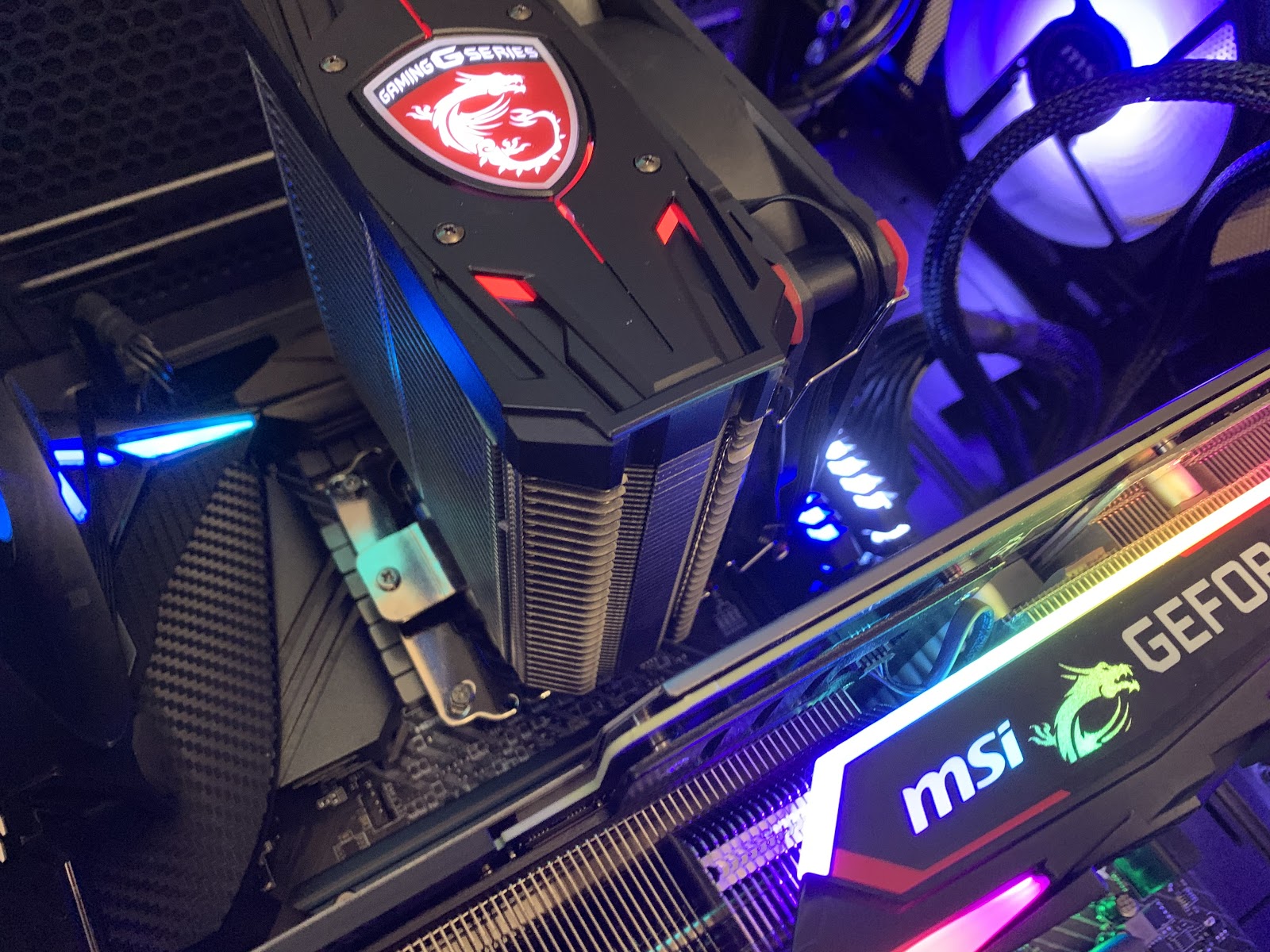
Since we have used the NVMe drive for the OS, here is the detailed info of the NVMe drive from the BIOS.
Here the SATA and RST (Rapid Storage) related settings.
Here we have the Ethernet settings.
You can control the behavior of the LEDs under power off and standby modes.
PC Health Status shows various values of the variables including the voltage readouts.
Smart Fan 5 gives total control of the connected fans/pumps to the user. The user can change the control type of the connected fan to PWM or Voltage. The voltage is for 3-pin fans. The auto will work just fine as well. The user can set the custom fan curve as well. The control source can be set to CPU, external sensors, PCIe, etc.
The user can also select the predefined speed control modes Full speed, silent, Normal, and Manual. Selecting Manual will allow the user to plot the graph according to the required custom fan curve. Alarms can be created based on the given temperature threshold.
The System menu shows the model of the motherboard and BIOS version.
The user can control the boot time behavior of the drives and the system. Fast Boot can be activated from here as well as the CSM support. Boot drive priorities can be set from here.
The user can create profiles in this menu. Rest it does what the name indicates; save the settings and exit the UEFI.
The BIOS is loaded in the default mode which is Easy Mode. It has a graphical presentation of the overall components and related variables values like voltages, frequencies, etc. Pressing F2 will switch to the Advanced Mode. Pressing F12 will capture the current screen and dump it in BMP format on the FAT16/32 formatted USB drive.
GIGABYTE Software
GIGABYTE has provided tons of applications that the user can download from their website to be used for this motherboard. Their App Center is the basic application that is a must installed in order for all other applications to work except for the RGB Fusion 2.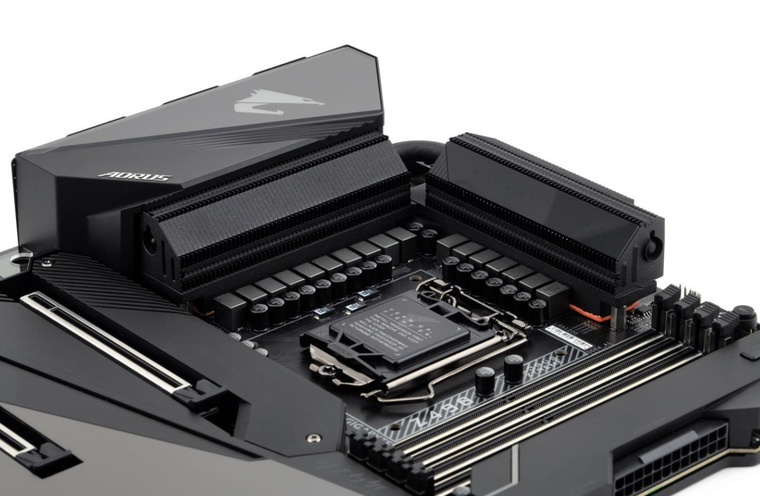 Here is a list of some of the applications:
Here is a list of some of the applications:
- @BIOS
- cFosSpeed
- System Information Viewer (SIV)
- Easy Tune
- Fast Boot
Install the App Center and let it download the required software from the website. Alternatively, you can download the software directly and it will show in the app center.
Here is the list of the software which we have downloaded to showcase.
@BIOS is an easy to use software that allows the user to save the current UEFI/BIOS of the motherboard and update the UEFI/BIOS either from the already downloaded BOS file or from the internet.
The Fast Boot does exactly what it is supposed to which is to disable/enable the Fast Boot.
The RGB Fusion 2.0 is GIGABYTE lighting control software. GIGABYTE has also released its mobile app which allows the user to control the lighting using their mobile devices. We have used TeamGroup T-Force Night Hawk DDR4 RGB RAM. The software picks the RAM immediately.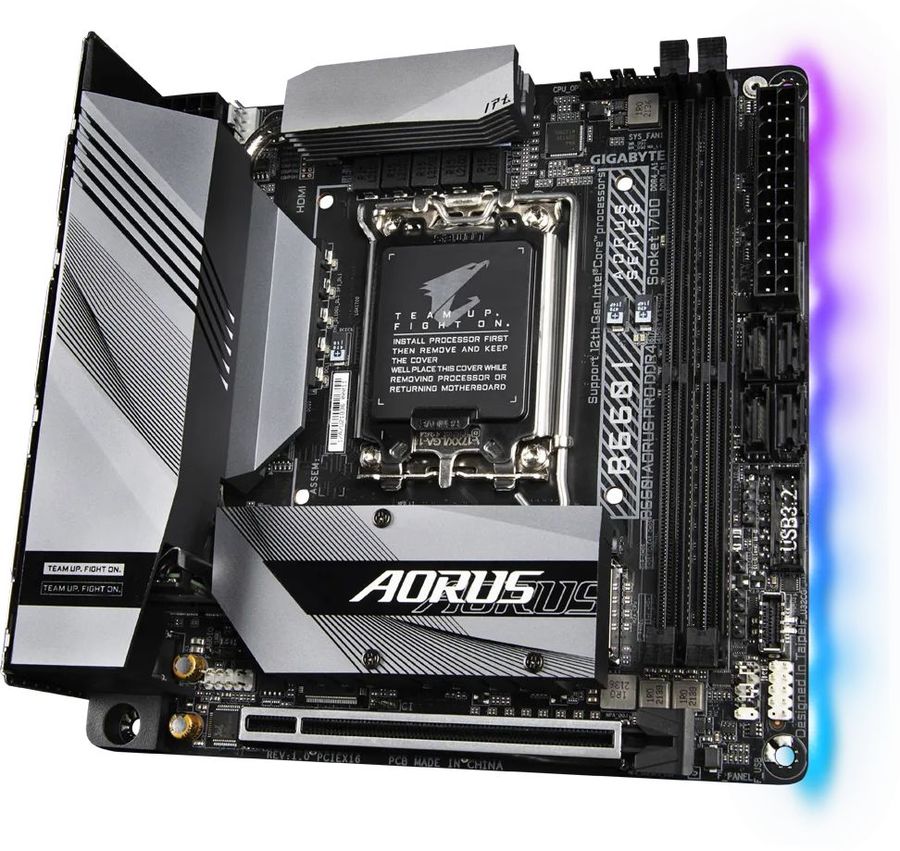 However, we can only set static colors when synced with the motherboard. There is no digital lighting option in the sync mode.
However, we can only set static colors when synced with the motherboard. There is no digital lighting option in the sync mode.
Clicking the motherboard picture will load the options to individually set the lighting zones on the motherboard including the connected RGB/A-RGB devices to the headers. There are many modes available at the user’s disposal to select from.
The above picture shows the change of color on the motherboard’s ports showing exactly what mode/color is selected by the user.
Easy Tune is a Tuning utility like AiSuite from ASUS. The user will be welcome by a disclaimer note when the utility is launched. Any damage resulted from the tuning aka the overclocking is purely at the user’s risk and cost.
We have 4 options under the Smart Boost. Note that 5.1GHz on a single core is listed under Eco and Default mode. 5.3 is all core mode under the OC mode. I am not sure if the software is calculating the 5.3 value or it is just provided as it is.
Advanced CPU OC section loads options to overclock the CPU.
Advanced DDR OC loads the options to overclock the DDR4 kit.
Here the user can remove the power restriction/protections for extreme overclocking.
The SIV (System Information Viewer) allows the user to fine-tune their cooling solution as per the requirement. One thing which I don’t like is that the software enters calibration mode right at the start. This should be optional particularly for advanced users.
System Information section is showing the current status of the CPU, Memory, and Motherboard.
We have four pre-defined fan control modes here. Clicking on any will load its effect.
Smart Fan 5 Advanced is a feature-rich control option to control the behavior of your PC fans.
The user can set various alarms as per the requirement to caution when the set value is reached or crossed.
Record section graphs the various data range including voltages, temperature, and fan.
Motherboard Test Setup
Following test bench setup is used to test the performance of the motherboard:
- Intel i7 10700k
- EK-AIO 240 D-RGB
- T-Force Night Hawk RGB 16GB @ 3200 MT/s
- Nvidia GeForce GTX 1080 Founder’s Edition
- CORSAIR AX1200i
- Addlink S70 256 M.2 NVMe SSD for OS
- Samsung 840 EVO 1 TB SSD for the Games
There is no extra fan except two fans on the cooler, one in the PSU and the blower cooler in the graphics card.
Microsoft Windows 10 x64 Pro 20h3 (OS Build 19042.630) was used for all the testing. Nvidia 460.79 drivers were used for graphics card testing. Following software were used for performance evaluation: –
Storage Drive Tests:
- AS SSD
- ATTO
- Crystal Disk Mark
CPU Tests:
- Cinebench R15
- Cinebench R20
- GeekBench 5
- 7-Zip
- AIDA64 Extreme
- Super Pi
Memory Tests:
- AIDA64 Extreme
Overall System Tests:
- PCMark10
- Performance Test
For gaming and synthetic bench of the graphics card following software were used:-
- 3DMark
- Assassin’s Creed Origin
- Shadow of Tomb Raider
- Metro Exodus
- Far Cry 5
- DOOM Eternal
Testing
This section will show the results of the various test suites and gaming benchmarks that we have run on this Z490 AORUS PRO motherboard.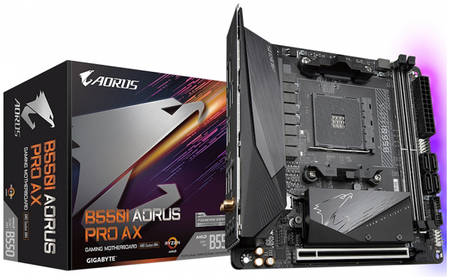
PCMark10 benchmarks
Performance Test
Cinebench
Geekbench 5
7-Zip
Super PI
AIDA64 Extreme 6.2
CrystalDiskMark
ATTO
AS SSD
3DMark
Render Time
Following games have been tested using their maximum graphics quality presets/settings.
Assassin’s Creed Origin
Shadow of the Tomb Raider
Far Cry 5
DOOM Eternal
Metro Exodus
Overclocking, Power Consumption, and Thermals
For the purpose of to the point testing, we disabled the Gigabyte Core enhancement to stay with the Intel default’s. On stock, all the settings were left at Auto except the DRAM voltage and timings. We have used Blender Benchmark on stock and overclocked settings for the thermals and stability. CORSAIR Link software was used to take a reading of the power consumption.
The above picture shows what it is like to have Intel i7 10700k on the Auto, Stock settings. Two cores have hit the 5.1GHz mark which is exactly the Turbo Boost Max Tech 3.0. The average temperature was 65.75°C with an ambient of 19.5°C. The maximum power package was 134.475W.
The above picture shows the power draw of the system as reported by CORSAIR iCUE coming off their AX1200i PSU. Please, note that the graphics card was not under any load. Your mileage would vary and there is no way this should be taken as a reference point.
I was able to overclock the chip with all cores on 5.1GHz using 1.379V. For this, I have to set the Voltage Control Mode in Normal and use the override method with -0.100 offset. The LLC was set to Auto. Under Blender Benchmark the average temperature was 72.25°C at an ambient of 18.5°C. The maximum power on the package was 172.339W. The system power draw was around 332W without the graphics load.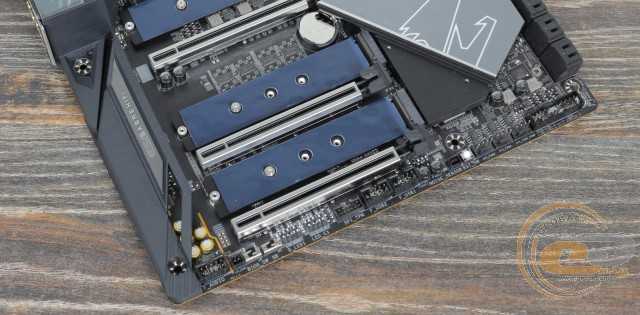
Here is the Cinebench R23 result from the overclocking
Thermal Imaging
We have used the Hti HT18 Thermal camera to record the thermals of the VRM area of the motherboard under load using blender benchmark on the stock and with overclock scenario.
The maximum temperature on the MOSFETs was 49.7°C with an ambient of 19.5°C.
With 5.1GHz all core under Blender Benchmark testing, the maximum temperature on the MOSFETs was 62.4°C with an ambient of 18.5°C.
This goes to show the powerful cooling solution employed by the AORUS on their Z490 PRO AX motherboard. I am expecting these values to be high with Intel i9 and more aggressive overclock but given the result, these VRMs have enough cooling to handle any load.
Conclusion
We are seeing another refresh of Skylake from Intel using a 14nm fab node. AMD with their Zen 3 has broken the inertia and took over a substantial lead which in the end is a win-win for the consumers. The Comet Lake from Intel is their 10th gen Core i series CPUs using the revamped socket using 1200 pins to address the power requirements of their Core i9 CPUs in the lineup. With this new socket, Intel has released new chipsets to go hand-in-hand.
The Comet Lake from Intel is their 10th gen Core i series CPUs using the revamped socket using 1200 pins to address the power requirements of their Core i9 CPUs in the lineup. With this new socket, Intel has released new chipsets to go hand-in-hand.
Z490 is their enthusiast segment chipset with loads of features and overclocking potentials though there are meager differences between the Z490 and the Z390 chipsets with Intel focusing on networking more than any other improvement as we have 2.5 GbE connectivity and WiFi 6 with AX and Bluetooth 5.1 connectivity.
Another difference is the DRAM frequency transfer of 2999MHz as compared to the 2666 MHz. Comet Lake comes with 40 PCIe lanes with 16 from the CPU socket and 24 from the chipset. I digress as this article is about the motherboard not the overview of the chipset itself.
The GIGABYTE Z490 AORUS PRO AX Gaming Motherboard is more of an upper mid-range offering from the manufacturer with balanced features which now makes more sense with reduced pricing of $219. 99 as compared to $259.99 which was kinda premium price tag. Coming from the APRUS family, one is sure that this Z490 AORUS PRO Review packs beefy power delivery in the form of 12+1 power phases with DrMOS using doublers and powerful cooling provision for the VRM/MOSFET.
99 as compared to $259.99 which was kinda premium price tag. Coming from the APRUS family, one is sure that this Z490 AORUS PRO Review packs beefy power delivery in the form of 12+1 power phases with DrMOS using doublers and powerful cooling provision for the VRM/MOSFET.
GIGABYTE is using an Intersil ISL69269 PWM controller with SiC620A doublers to deliver clean power to the CPU socket which is using an array of Tantalum Polymer capacitors for efficient transient load and stability.
Using the Intel LGA1200 socket and Z490 chipset this motherboard is supporting the Intel 10th gen CPUs and will be compatible with their 11th gen CPUs on the horizon.
Unfortunately, the Comet Lake does not support PCIe 4.0 protocol which is a letdown particularly when AMD with its Zen2+ already had PCIe 4.0 hardware in the market when this generation was launched. With Zen 3, AMD has taken their game to the next level which is unrivaled at the moment. This is history in making!
The GIGABYTE Z490 AORUS PRO AX Gaming Motherboard has 4 DIMM slots with a maximum capacity of 128GB DDR4 in a dual-channel using a maximum supported transfer rate of 5000 MT/s. These slots are stainless steel reinforced with PCB having a shielded layout to avoid interference.
These slots are stainless steel reinforced with PCB having a shielded layout to avoid interference.
The board has dual M.2 ports with thermal guards to ensure that the M.2 drives don’t get throttle under load and provide maximum performance. GIGABYTE has taken a hybrid approach as they have provided a PCIe 4.0 ready PCB with PCIe 4.0 Turbo B-Clock chip to provide future compatibility. We have 5x PCIe slots with the top two slots being PCIe 4.0 ready.
The PCIe X16/X8 slots are stainless steel reinforced. There are 6x SATA3 ports which share bandwidth with the M.2 ports and PCIe 3.0 X4 slot.
The beefy VRM/MOSFET cooling is coming from two aluminum louvered stacked fins (Fins Array-II) and jointed by an 8mm heat pipe using Direct-Touch II technology. The complete solution is placed on the VRM/MOSFET using 1.5mm (5W/mK) thick thermal pads to ensure effective heat dissipation. In terms of the cooling department, there are 8x hybrid 4-pin fan/pump headers.
There are 7x thermal sensors across the entire PCB and 2 external sensors are provided.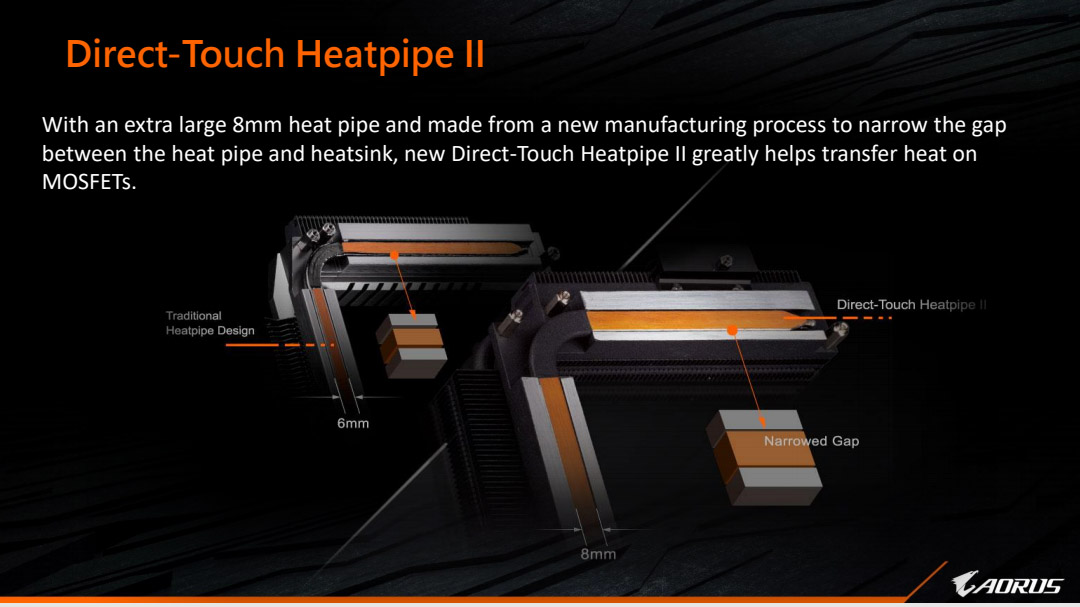 Smart Fan 5 is used to control the functionality of these headers. The motherboard has 8+4 pin EPS connectors using a solid pin design. The board hosts plenty of USB ports including 5x USB 3.2 Gen-1 ports, 2x USB 3.2 Gen-2 Type-A, and 2x USB Type-C ports. The motherboard has 2 RGB LED zones on the shroud area and the Audio PCB layer. In addition, there are 2x 5V lighting headers and 2x 12V lighting headers.
Smart Fan 5 is used to control the functionality of these headers. The motherboard has 8+4 pin EPS connectors using a solid pin design. The board hosts plenty of USB ports including 5x USB 3.2 Gen-1 ports, 2x USB 3.2 Gen-2 Type-A, and 2x USB Type-C ports. The motherboard has 2 RGB LED zones on the shroud area and the Audio PCB layer. In addition, there are 2x 5V lighting headers and 2x 12V lighting headers.
The motherboard comes with Intel 2.5 GbE NIC and a 2×2 WiFi 6 201AX solution with an antenna. The Audio section is using Chemicon capacitors to drive the Realtek ALC1220 with VB series Audio Controller. The motherboard comes with a single 256 Mbit flash UEFI/BIOS.
When it comes to the performance and actual numbers, this Z490 AORUS PRO motherboard is crunching on the numbers in this price range. I am not expecting much on this VRM/MOSFET set but they can handle the given load at ease depending upon the CPU used and the overclocking employed.
If you are into serious overclocking, then look up the Master and XTREME motherboards from AORUS as they pack very beefy VRM solution capable of handling up to 90A per phase.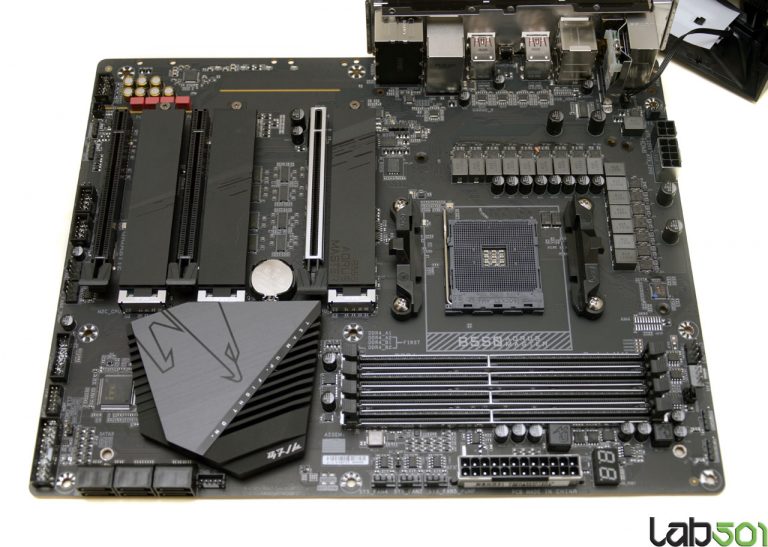 The beefy cooling solution on the VRM is paying off as the maximum temperature on the VRM was 62.4°C and with a bit of tweaking the voltage setting without disturbing the LLCs, we were able to run our 10700k hit 5.1GHz all core at 1.379V VCORE.
The beefy cooling solution on the VRM is paying off as the maximum temperature on the VRM was 62.4°C and with a bit of tweaking the voltage setting without disturbing the LLCs, we were able to run our 10700k hit 5.1GHz all core at 1.379V VCORE.
The 240mm AIO solution from EK Water Block has no issue handling this overclock even with AVX load. But all efforts to make 5.2GHz happened on all core was futile as the chip easily reached thermal limits and throttled. 1.5V seems to be required to achieve the 5.2GHz. I never had a stable 5.2GHz stable overclock but 5.1GHz was like a walk in the park. The audio solution is working to its name and wireless internet connectivity was super smooth.
Check Price on Amazon
Was our article helpful? ??
Thank you! Please share your positive feedback. ?
How could we improve this post? Please Help us. ?
GIGABYTE Z490 AORUS PRO-AX Review
2 years ago
WEB: GIGABYTE MSRP: US $269.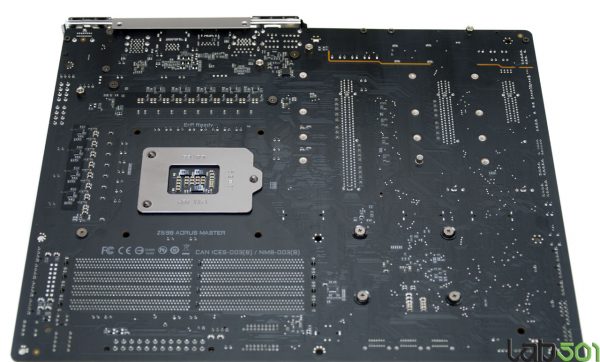 99 | ZAR TBD | AUTHOR: Neo
99 | ZAR TBD | AUTHOR: Neo
Here it is, the first Z490 based motherboard review from TheOverclocker. Gigabyte’s Z490 AORUS PRO-AX, was not only the first Z490 motherboard received, but happens to be one of the strongest contenders for the value for money throne. Typically, a new platform is evaluated on a high-end board, but this time it’s a mid-level offering. The PRO-AX not only shows the improvements Gigabyte has made, but shows what the 10th Generation Core CPUs can achieve at their best.
Introduction
Similar to the last motherboard reviewed, the PRO-AX brings with it all the basic functionality and a little extra to warrant its pricing. While the Z490 chipset offers near-identical features to the outgoing Z390, the socket does allow future connectivity upgrades. The lack of PCIe 4.0 connectivity has up until now, plagued the Intel ecosystem. With the Z490 chipset, the AORUS PRO-AX is offering a complete platform for today and tomorrow.
| Specifications | ||
| Socket | CPU | LGA 1200 | 10th Gen Core Series CPUs | |
| Chipset | Intel Z490 | |
| Memory Support | 4xDIMM DDR4 2133 – DDR4 5000 (O.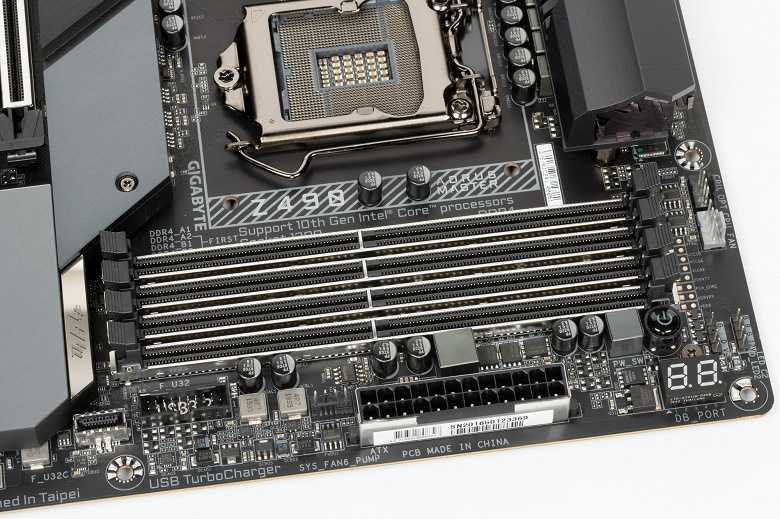 C.) C.) |
|
| Storage | 6x SATA 6Gbps | 3x M.2 (PCIe 3.0 x4) | |
| Audio | ALC 1220-VB | |
| Expansion Slots | 3x PCIe 3.0 x16 (x16 | x8 | x4) | |
| Connectivity | Intel I225-V (2.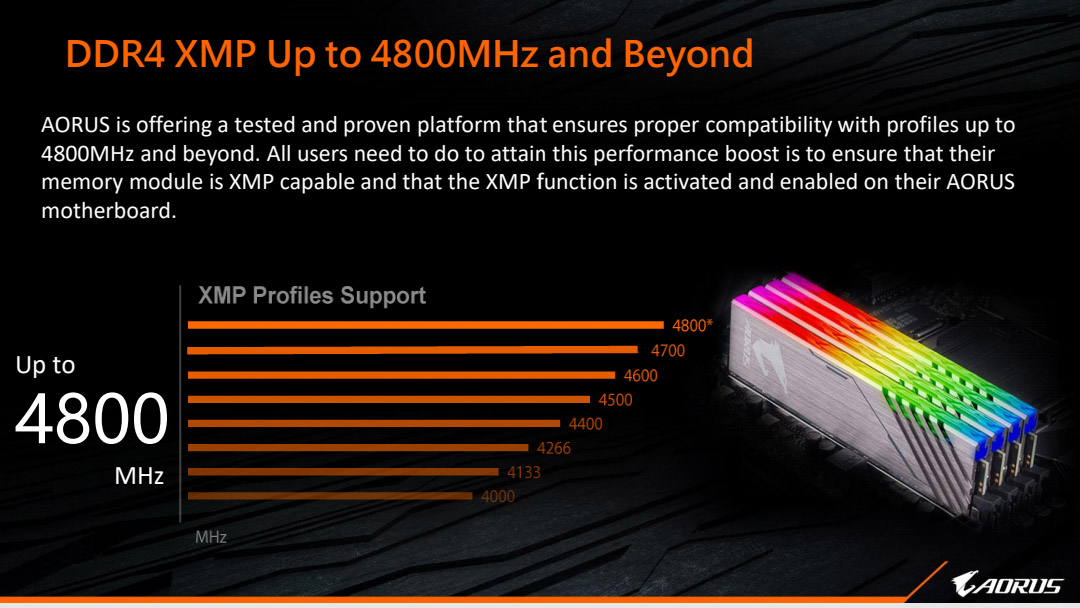 5Gbps) | BT 5.1 | Wi-Fi 6 AX201 5Gbps) | BT 5.1 | Wi-Fi 6 AX201 |
|
| Rear Panel I/O | 2x USB 3.2 Gen 2-A | 2x USB 3.2 Gen 1 | 4x USB 2.0 | 1x USB 3.2 Gen 2×2- C | |
| Total Fan Headers | 8x 4-pin (PWM/Voltage) | |
| Power Connectors | 1x 24-pin EATX, 2x 8-pin 12V | |
| Form Factor | ATX Form Factor: 12.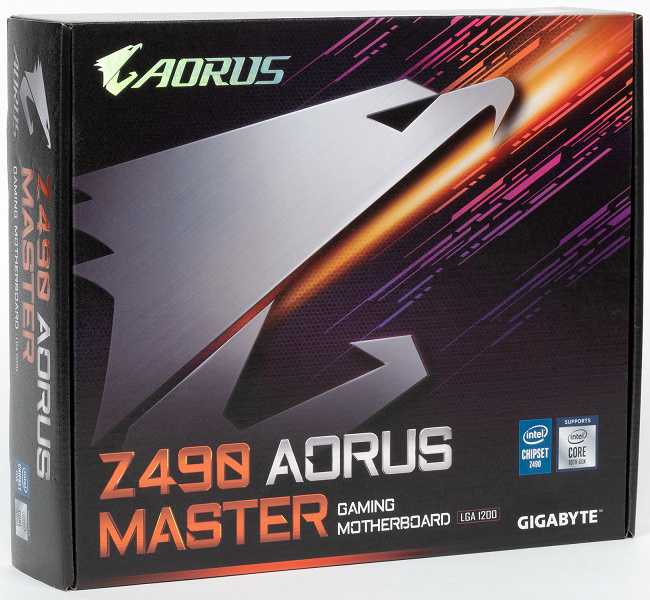 0-in x 9.6-in, 30.5 cm x 24.4 cm 0-in x 9.6-in, 30.5 cm x 24.4 cm |
|
This specification is as you’d expect. There’s nothing that stands out here save for the DDR 5000 support. Such high-frequency DRAM compatibility is a remarkable feat for any motherboard, let alone a four DIMM model.
You are here: Page 1 – Introduction
Jump to page…Page 1 – IntroductionPage 2 – PowerPage 3 – Board FeaturesPage 4 – General ImpressionsPage 5 – UEFI & Test methodsPage 6 – BenchmarksPage 7 – Benchmarks IIPage 8 – Benchmarks IIIPage 9 – OverclockingPage 10 – Conclusion
Tags: AORUS, Core i5 10600K, GIGABYTE, Intel 10th Gen, LGA 1200, Z490, Z490 AORUS PRO-AX
Pages: 1 2 3 4 5 6 7 8 9 10
GIGABYTE Z490 AORUS PRO AX Intel Z490 ATX Motherboard
LOADING…
Visit Vooyit Store
See more «gigabyte z490»
Option: Z490 AORUS PRO AX
- Supports 10th Gen Intel Core Series Processors
- Direct 12+1 Phases Digital VRM Solution with 55A DrMOS
- Next Generations VRM Cooling Fins Array and Direct Touch Heatpipe
- Shielded Xtreme Memory Design with Tantalum Polymer Capacitors Array
- Dual Channel Non-ECC Unbuffered DDR4, 4 DIMMs
- Intel 2.
 5 GbE LAN
5 GbE LAN
- 2 x M.2 AORUS Next Generation Thermal Guard
- Onboard Intel WiFi 6 802.11ax 2T2R & BT5 with AORUS Antenna
- AMP UP Audio ALC1220-VB AUDIO DAC
- RGB Fusion 2.0
- Smart Fan 5 Hybrid Fan Headers with smart fan functions (Fan Stop, PWM Controls, Noise Detection)
- Rear 2 x USB 3.2 Gen 2 Type A, 1 x USB 3.2 Gen 2 Type C, 3 x USB 3.2 Gen 1 Type A, 4 x USB 2.0
- Front 1 x USB 3.2 Gen 1 Type C, 2 x USB 3.2 Gen 1, 4 x USB 2.0
- Integrated I/O Shield
- Q-Flash Plus Update BIOS Without Installing CPU, Memory or GPU
- Hi-Res Audio Certified, PCIe 4.0 Grade Design
Overview
Specs
Reviews
*Performance may vary in circumstances. Please refer to the QVL list for detail support information.
Please refer to the QVL list for detail support information.
Circulation Zone
Because of pressure difference and flow separation, a circulation zone will be formed between louvered fins. This circulation will cause flow entrain and eject in the vortice form which improves thermal efficiency.
This circulation will cause flow entrain and eject in the vortice form which improves thermal efficiency.
Thermal Throttling As Temperature Rises
Different models have a different number of fan pin headers and temperature sensors. Smart Fan 5 function may vary by model.
With an integrated intuitive user interface, the RGB Fusion 2.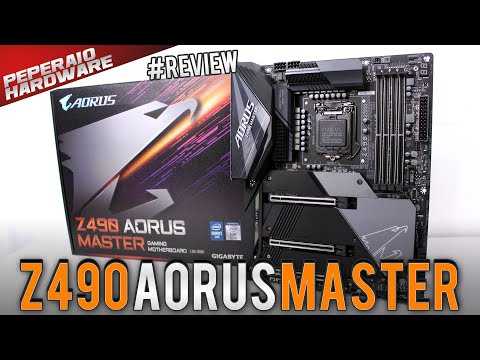 0 provides you a better solution for customizing the lighting effects across all supported devices. From motherboards, graphics cards to the peripheral products, you can personalize your gaming rig with your own style and show off your build by sharing the profiles. In addition, the new gaming mode makes the lighting effects interactive with selected games to bring you the most immersive gaming experience.
0 provides you a better solution for customizing the lighting effects across all supported devices. From motherboards, graphics cards to the peripheral products, you can personalize your gaming rig with your own style and show off your build by sharing the profiles. In addition, the new gaming mode makes the lighting effects interactive with selected games to bring you the most immersive gaming experience.
Warranty & Returns
Warranty, Returns, And Additional Information
LOADING. ..
..
LOADING…
Gigabyte Z590 Aorus Pro AX Review: Premium Mid-Range
Tom’s Hardware Verdict
The Gigabyte Z590 Aorus Pro AX is a full-featured Z590 motherboard that includes robust power delivery, premium audio, four M.2 sockets, and 13 USB ports on the rear IO. This $290 board is a good value, especially for those who would like lots of M.2 and USB ports.
Pros
- +
+ 13 rear USB ports. including Type-C Gen 2×2
- +
+ Robust 90A, 12-Phase VRM
- +
+ Four M.2 sockets
- +
+ Latest-gen audio solution
Today’s best Gigabyte Z590 Aorus Pro AX and deals
$174
View
$179.99
View
$279. 86
86
$217.73
View
Reduced Price
Show More Deals
The Gigabyte Z590 Aorus Pro AX positions itself as a mid-range SKU with a modest (for recent motherboard generations) price of $289.99. For that price, you get the most USB ports — thirteen, including USB 3.2 Gen 2×2 Type-C port — we’ve seen on any motherboard in quite a while. Additionally, the board includes the latest audio codec, extreme overclocking-capable power delivery and four M.2 sockets. This, coupled with a reasonable price tag, yields a great option fory new Intel-based builds.
Gigabyte’s current Z590 product stack consists of 13 models. There are familiar SKUs and a couple of new ones. Starting with the Aorus line, we have the Aorus Xtreme (and potentially a Waterforce version), Aorus Master, Aorus Ultra, and the Aorus Elite. Gigabyte brings back the Vision boards (for creators) and their familiar white shrouds.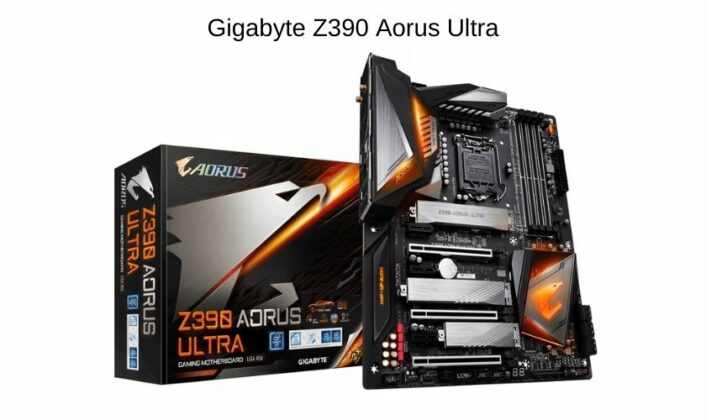 The Z590 Gaming X and a couple of boards from the budget Ultra Durable (UD) series are also listed. New for Z590 is the Pro AX board, which looks to slot somewhere in the middle. Gigabyte also released the Z590 Aorus Tachyon (review coming soon), an overbuilt motherboard designed for extreme overclocking.
The Z590 Gaming X and a couple of boards from the budget Ultra Durable (UD) series are also listed. New for Z590 is the Pro AX board, which looks to slot somewhere in the middle. Gigabyte also released the Z590 Aorus Tachyon (review coming soon), an overbuilt motherboard designed for extreme overclocking.
Overall, performance on the Aorus Pro AX was inconsistent in our testing. Some results were below the average, while others were right there or faster than the pack. For example, the 3D/game testing showed above-average results, while some synthetic tests were slower than others. This board is performant out of the box, with settings that go beyond Intel specifications.
The mid-priced Aorus Pro AX brings users premium features, including 90A MOSFETs, Realtek 4000 series audio, a staggering four M.2 sockets and a slew of USB ports. Gigabyte updated the appearance from the last generation as well. So between the modern appearance and updated hardware, there’s a lot to take in. We’ll cover those and other features in more detail Below. But right out of the gate this looks like a strong contender for our best motherboards list. First, let’s take a look at the full specs list from Gigabyte.
We’ll cover those and other features in more detail Below. But right out of the gate this looks like a strong contender for our best motherboards list. First, let’s take a look at the full specs list from Gigabyte.
- Gigabyte Z590 Aorus Pro AX at Amazon for $140
| Socket | LGA 1200 |
| Chipset | Z590 |
| Form Factor | ATX |
| Voltage Regulator | 12 Phase (12+1+1+2, 90A MOSFETs) |
| Video Ports | (1) DisplayPort |
| USB Ports | (1) USB 3.2 Gen 2×2, Type-C (20 Gbps) |
| (4) USB 3.2 Gen 2, Type-A (10 Gbps) | |
| (4) USB 3.2 Gen 1, Type-A (5 Gbps) | |
| (4) USB 2.0 (480 Mbps) | |
| Network Jacks | (1) 2.5 GbE |
| Audio Jacks | (5) Analog + SPDIF |
| Legacy Ports/Jacks | ✗ |
| Other Ports/Jack | ✗ |
| PCIe x16 | (1) v4.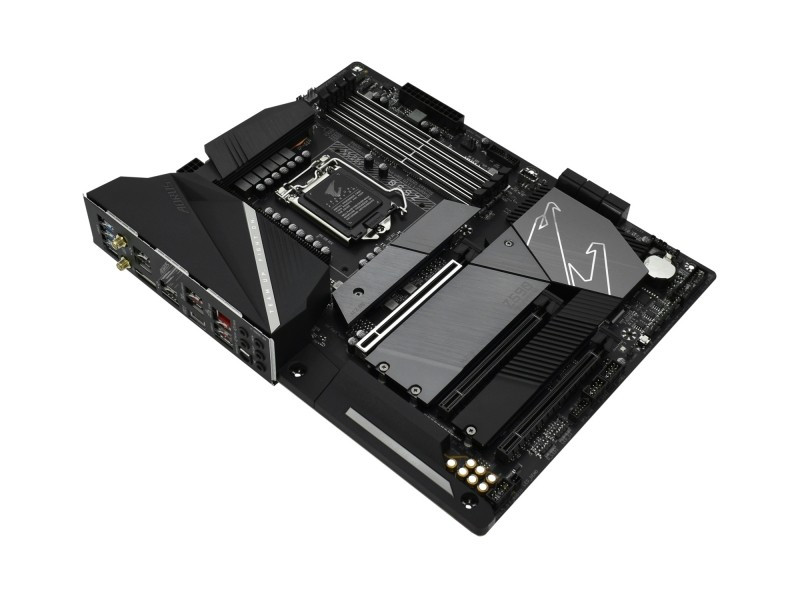 0 x16 0 x16 |
| (2) v3.0 x4 | |
| PCIe x8 | ✗ |
| PCIe x4 | ✗ |
| PCIe x1 | ✗ |
| CrossFire/SLI | AMD Quad-GPU Crossfire and 2-Way AMD Crossfire |
| DIMM slots | (4) DDR4 5400(OC), 128GB Capacity |
| M.2 slots | (1) PCIe 4.0 x4 / PCIe (up to 80mm) |
| (2) PCIe 4.0 x4 / PCIe (up to 110mm) | |
| (1) PCIe 3.0 x4 / PCIe and SATA (up to 110mm) | |
| U.2 Ports | ✗ |
| SATA Ports | (6) SATA3 6 Gbps (RAID 0, 1, 5 and 10) |
| USB Headers | (1) USB v3.2 Gen 2 (Front Panel Type-C) |
| (1) USB v3.2 Gen 1 | |
| (2) USB v2.0 | |
| (2) Thunderbolt AIC headers | |
| Fan/Pump Headers | (8) 4-Pin |
| RGB Headers | (2) aRGB Gen 2 (3-pin) |
| (2) Aura RGB (4-pin) | |
| Legacy Interfaces | ✗ |
| Other Interfaces | FP-Audio, TPM |
| Diagnostics Panel | 4-LED ‘Status LED’ display |
| Internal Button/Switch | ✗ |
| SATA Controllers | ✗ |
| Ethernet Controller(s) | (1) Intel I225-V (2. 5 GbE) 5 GbE) |
| Wi-Fi / Bluetooth | Intel WiFi AX200 (802.11ax, 160 Hz, BT 5.1) |
| USB Controllers | Realtek RTS5411E |
| HD Audio Codec | SupremeFX ALC4080 |
| DDL/DTS Connect | ✗ / ✗ |
| Warranty | 3 Years |
Inside the box along with the motherboard are a slew of accessories. While certainly not the most inclusive we’ve seen, the SATA cables, Wi-Fi Antenna, screws and more, are plenty to get your system build moving along. Here’s everything that Gigabyte includes in the box.
- User’s Manual / Installation Guide
- Q-connector
- Aorus sticker
- Graphics card holder
- Wi-Fi Antenna
- (4) SATA cables
- (3) Screw packages for M.2 sockets
- (1) RGB extension cable
Image 1 of 3
(Image credit: Gigabyte)
(Image credit: Gigabyte) (Image credit: Gigabyte)Once we removed the Pro AX from the box, we noticed a few design changes from the Z490 version.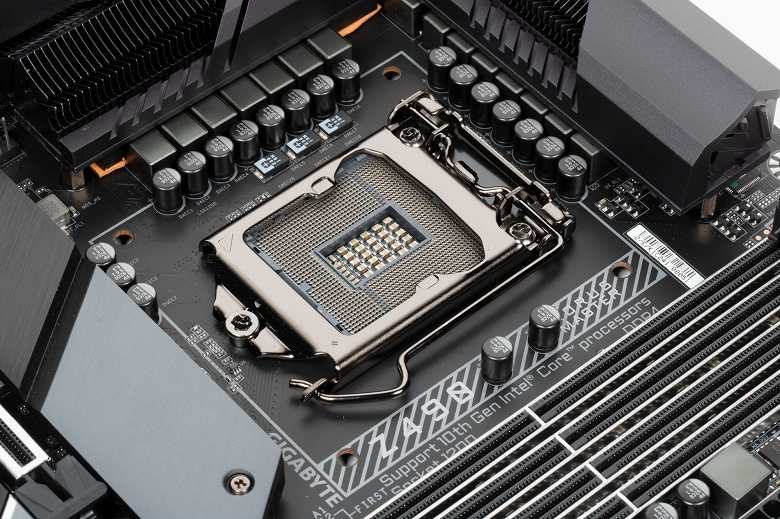 The first,the direction of the lines and brushed-aluminum finish on the M.2 and the chipset heatsinks go the other way. Outside of that, the rear IO cover with its single RGB LED strip, VRM heatsinks, matte-black PCB and reinforced slots are familiar carryovers. The audio shroud illuminates the “Amp Up Audio” branding towards the bottom with RGB LED. Those looking for an RGB light show will have to add their own to the internal headers, but what’s here does give off a nice saturated glow, even if it isn’t a disco.
The first,the direction of the lines and brushed-aluminum finish on the M.2 and the chipset heatsinks go the other way. Outside of that, the rear IO cover with its single RGB LED strip, VRM heatsinks, matte-black PCB and reinforced slots are familiar carryovers. The audio shroud illuminates the “Amp Up Audio” branding towards the bottom with RGB LED. Those looking for an RGB light show will have to add their own to the internal headers, but what’s here does give off a nice saturated glow, even if it isn’t a disco.
Overall, this board looks good for the price and should fit in with most build themes. The brushed-aluminum accents give this board a more premium appearance than others around the same price point.
(Image credit: Gigabyte)
Starting in the upper left, we get a closer look at the shroud with the Aorus branding, along with the “Team Up, Fight On” motto. Between this is a plastic diffuser to thin the light out from the RGB LEDs below. If that shroud looks familiar, it’s because it’s a carryover from the Z490 Pro AX.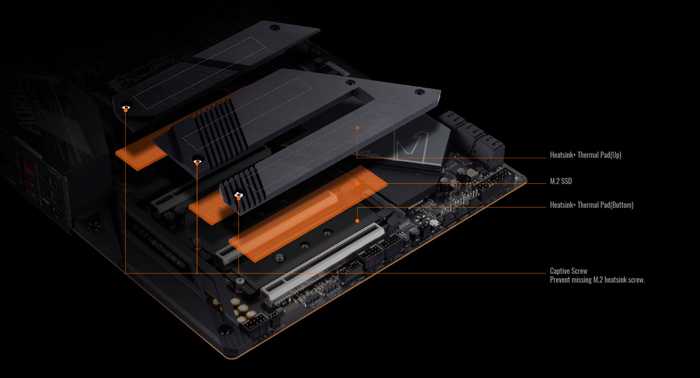 Moving to the right, we see an 8-pin EPS connector (required) with an optional 4-pin next to it. Also located in this area, curiously, is the first of eight 4-pin fan headers.
Moving to the right, we see an 8-pin EPS connector (required) with an optional 4-pin next to it. Also located in this area, curiously, is the first of eight 4-pin fan headers.
The VRM heatsink is the same as Z490, using a large metal sink on the top bank and a finned heatsink over the left bank. As you’ll see later on, this solution does a good job cooling the chips below. Just to the right, above the DRAM slots, are two more fan headers (CPU_OPT and CPU_FAN). All fan headers on this board support both 3-pin and 4-pin fans. Each header outputs up to 2A/24W, which should be plenty for piggybacking a couple of fans, as well as supporting most water pumps.
Just below these headers are the four DRAM slots. Gigabyte reinforces the slots with its Ultra Durable Memory Armor, which improves the appearance, but in general isn’t all that useful — on any motherboard. The board supports up to 128 GB of RAM with speeds listed up to DDR4 5400, some of the fastest we’ve seen. As always, your mileage may vary as you’ll need the right CPU and memory kit to reach those speeds.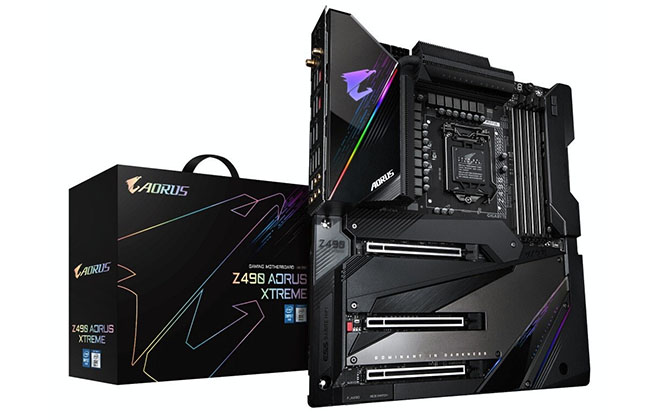
To the right of the DRAM slots are the first set of 3-pin ARGB and 4-pin RGB headers. A little higher up the board than usual is the 24-pin ATX connector for primary power. Below this is a system fan header, a USB 3.2 Gen 1 header and a USB 3.2 Gen 2×2 Type-C header.
(Image credit: Tom’s Hardware)
The Pro AX uses a 12+1(+1+2) configuration for the Vcore and System Agent. The EPS connector sends power to a Renesas ISL69269 12-channel (X+Y+Z=12) controller. It’s then fed directly (no phase doublers or teaming here!) to 12 Renesas ISL99390 90A Smart Power Stages. This setup yields 1080A available for the CPU. In short, you’ll be limited by the CPU cooling well before the power delivery lets you down here.
(Image credit: Gigabyte)
As we move to the bottom half of the board, we’re greeted by plastic shrouds and heatsinks covering most of the PCB. On the left side is a plastic shroud that covers a majority of the audio bits. On top is the second and final RGB LED location that lights up the Amp Up Audio branding. Hidden below is the latest generation Realtek ALC4080 codec, along with WIMA audio capacitors for the rear outputs (Gigabyte says 120dB SNR for that output). Also visible are several yellow Nichicon audio capacitors and the audio separation line from the rest of the board. Most users will find this audio solution satisfactory.
Hidden below is the latest generation Realtek ALC4080 codec, along with WIMA audio capacitors for the rear outputs (Gigabyte says 120dB SNR for that output). Also visible are several yellow Nichicon audio capacitors and the audio separation line from the rest of the board. Most users will find this audio solution satisfactory.
In the middle of the board resides the four M.2 sockets and three PCIe slots. To prevent shearing and EMI protection (for what it’s worth), Gigabyte reinforced the top PCIe slot. The top slot is wired directly to the CPU and runs at PCIe 4.0 x16. The two other slots are sourced from the chipset and run at PCIe 3.0 x4 speeds. This configuration supports AMD Quad-GPU Crossfire and 2-Way AMD Crossfire. Since no other slots run at x8 speeds, NVIDIA SLI is not possible. I would like to have seen an additional x1 slot for additional peripherals, but the two full-length slots should be enough for most people.
Laced between and above the PCIe slots are all four M. 2 sockets. The top three M.2 sockets are connected via the CPU. The top, M2A_CPU, supports up to 80mm PCIe devices at PCIe 4.0 x4 speeds. The following two sockets, M2B_CPU and M2C_CPU, support up to 110mm PCIe modules at PCIe x4 speeds. The bottom M.2 socket, M2P_SB, is attached to the chipset and runs both SATA and PCIe modules (PCIe 3.0 x4). On this board, SATA port 1 gets disabled when a SATA-based M.2 drive is installed. Not too much to worry about there. The worst case is that you can have four M.2 modules and five or six SATA ports available (depending on what type of module is installed in M2P_SB). That’s a lot of storage without much lane sharing.
2 sockets. The top three M.2 sockets are connected via the CPU. The top, M2A_CPU, supports up to 80mm PCIe devices at PCIe 4.0 x4 speeds. The following two sockets, M2B_CPU and M2C_CPU, support up to 110mm PCIe modules at PCIe x4 speeds. The bottom M.2 socket, M2P_SB, is attached to the chipset and runs both SATA and PCIe modules (PCIe 3.0 x4). On this board, SATA port 1 gets disabled when a SATA-based M.2 drive is installed. Not too much to worry about there. The worst case is that you can have four M.2 modules and five or six SATA ports available (depending on what type of module is installed in M2P_SB). That’s a lot of storage without much lane sharing.
To the right of the PCIe/M.2 area is the chipset heatsink with the Aorus falcon on top. To the right of it are six horizontally affixed SATA ports. This board supports RAID0, 1, 5 and 10 modes. Last but not least, just below that next to the CMOS battery are the Thunderbolt 4 AIC headers.
Across the board’s bottom are several headers, including fan and USB, a QFlash button and more. The Aorus Pro AX also has a temperature header on the bottom and includes a sensor for it. This is a good value add for users who would like to ramp up/down fan speeds based on internal chassis temperature. Additionally, in the right-hand corner is the Dr.Debug display. This 4-LED area lights up during the POST process and displays the current stage (Boot, CPU, DRAM and VGA). If there is a problem during this process, the corresponding LED stays lit. Below is the full list of headers and buttons, from left to right:
The Aorus Pro AX also has a temperature header on the bottom and includes a sensor for it. This is a good value add for users who would like to ramp up/down fan speeds based on internal chassis temperature. Additionally, in the right-hand corner is the Dr.Debug display. This 4-LED area lights up during the POST process and displays the current stage (Boot, CPU, DRAM and VGA). If there is a problem during this process, the corresponding LED stays lit. Below is the full list of headers and buttons, from left to right:
- Front-panel audio
- RGB and ARGB headers
- TPM header
- (2) USB 2.0 headers
- 2-pin Temperature header
- Q-Flash button
- (3) System fan headers
- Clear CMOS jumper
- Front panel header
(Image credit: Gigabyte)
The rear IO area is dominated by a menagerie of USB ports. From USB 2.0 to USB 3.2 Gen 2×2 Type-C, you’ll find it here on one of the 13 ports. The IO plate itself comes preinstalled, and its black background and Aorus branding match the rest of the board. There’s a total of four USB 3.2 Gen 2 ports, four USB 3.2 Gen 1 ports, four USB 2.0 ports and finally, The 3.2 Gen 2×2 Type-C port. If you run out of USB ports on this board, you may want to reevaluate your life/peripheral choices—or you could just plug into one of the two previously mentioned USB-C front-panel headers. Video output (when using the integrated graphics on the CPU) comes from a single DisplayPort Port. In addition to the 2.5 GbE port are Wi-Fi antenna connections, and finally, the 5-plug plus SPDIF audio stack.
There’s a total of four USB 3.2 Gen 2 ports, four USB 3.2 Gen 1 ports, four USB 2.0 ports and finally, The 3.2 Gen 2×2 Type-C port. If you run out of USB ports on this board, you may want to reevaluate your life/peripheral choices—or you could just plug into one of the two previously mentioned USB-C front-panel headers. Video output (when using the integrated graphics on the CPU) comes from a single DisplayPort Port. In addition to the 2.5 GbE port are Wi-Fi antenna connections, and finally, the 5-plug plus SPDIF audio stack.
MORE: Best Motherboards
MORE: How To Choose A Motherboard
MORE: All Motherboard Content
- 1
Current page:
Features and Specifications
Next Page Firmware, Software and Test System
Joe Shields is a Freelance writer for Tom’s Hardware US. He reviews motherboards.
Aorus Z490 Pro AX Reviews
-
Review Database
- Motherboards
- Socket 1200
- Aorus Z490 Pro AX
Sort items by:
DateReview TitleSite NamePopularity
| 2020 | |||
|---|---|---|---|
| Jun 11, 2020 | Aorus Z490 Pro AX | Guru3D | |
| Jun 1, 2020 | Aorus Z490 Pro AX | Vortez | |
Oct 2nd, 2022 09:10 CEST
change timezone
Sign in / Register
- NVIDIA GeForce 517.
 48 WHQL
48 WHQL - AMD Radeon 22.9.2 Beta
-
Intel
IGP 101.3430
/
Arc 101.3430
-
by
hatDell Workstation Owners Club (2517)
-
by
EraserheadUndervolt Doesn’t Work (45)
-
by
ToothlessPRIME Z390-P with I9-9990KF no longer overclocked….still random shut downs!! BURNING RUBBER> (28)
-
by
TaraquinFPS Scaling with DDR5 — Sharing Results (20)
-
by
imperoSapphire RX 580 Pulse Dead ? (1)
-
by
imperoHelp finding a gaming bios for a mining rx470 gpu (4)
-
by
tabascosauzSFF fun house (250)
-
by
LenneTPU’s Nostalgic Hardware Club (15335)
-
by
LenneWhat’s your latest tech purchase? (13331)
-
by
LenneAM5 compatibility CPU block (1)
- AMD Ryzen 9 7950X Review — Impressive 16-core Powerhouse
- Asus Prime AP201 Review
- AMD Ryzen 5 7600X Review — Affordable Zen 4 for Gaming
- AMD Ryzen 7 7700X Review — The Best Zen 4 for Gaming
- Intel Arc A750 & A770 Unboxing & Preview
-
Red Dead Redemption 2: DLSS vs.
 FSR 2.0 Comparison Review
FSR 2.0 Comparison Review
- ASRock NUC BOX-1260P Barebones Mini-PC (Intel Alder Lake) Review
- Upcoming Hardware Launches 2022 (Updated Aug 2022)
- Gigabyte Z690I AORUS Ultra Plus DDR4 Review
- ASUS GeForce RTX 3090 STRIX OC Review
-
EVGA Announces Cancelation of NVIDIA Next-gen Graphics Cards Plans, Officially Terminates NVIDIA Partnership
(535) -
NVIDIA Project Beyond GTC Keynote Address: Expect the Expected (RTX 4090)
(332) -
Intel 13th Gen Core «Raptor Lake» Desktop Processors Launched: +15% ST, +41% MT Uplift
(164) -
NVIDIA AD103 and AD104 Chips Powering RTX 4080 Series Detailed
(152) -
Microsoft Unveils the Windows 11 2022 Update, Available Today
(131) -
Key Slides from Intel 13th Gen «Raptor Lake» Launch Presentation Leak
(125) -
AMD Ryzen 9 7900X CPU-Z Benched, Falls Short of Core i7-12700K in ST, Probably Due to Temperature Throttling
(123) -
Google Calls it Quits on Game Streaming, Shutting Down Stadia
(122)
Gigabyte Z490 Aorus Pro AX Motherboard Black
VOID SPLIT:
Shards of the Void; Borders Disappear:
— Fusing different materials and surface textures with negative space to form a juxtaposition and showcase a stylistic effect where the boundaries between components are not clearly defined. It creates a multi-dimensional design that seemingly cuts through space and time.
It creates a multi-dimensional design that seemingly cuts through space and time.
— Intel® WiFi 6 802.11ax 2T2R & BT5
— Onboard Display HDMI
— Rear USB 3.2 Gen2 Type-C™
— Intel® 2.5 GbE LAN
Advanced Thermal Design:
— Fins-Array II
— Direct-Touch Heatpipe II
— 5 W/mK LAIRD Thermal Conductivity Pad
— 2X Enlarged M.2 Thermal Guard
2* M.2 Connectors with Thermal Guards:
— NVMe PCIe 3.0 x4
AMP-UP Audio:
— ALC1220 Audio
— Audio Noise Guard
— High-End Audio Capacitor
— Audiophile Grade WIMA Capacitors
RGB FUSION 2.0:
— Addressable LED Header*2
— RGB LED Header*2
Direct 12+1 Phases Digital Power Design with DrMOS:
— PCIe 4.0 Ready Mid-Loss PCB
— 55A DrMOS
— Premium Choke and Capacitor
— 6 Layer PCB
— 2X Copper PCB
Solid Pin Power Connectors:
— 24 Pin ATX Power Connector
— 8+4 Pin CPU Power Connector
— Supports 10th Gen. Intel® Core™ Processors
— Dual Channel DDR4, 4 DIMMs with Ultra Durable Memory Armor
— Front USB 3. 2 Gen1 Type-C™ for Connecting Devices
2 Gen1 Type-C™ for Connecting Devices
Ultra Durable PCIe Armor:
— Running 1 x16 or 2 x8
Ultimate power design:
— Z490 AORUS PRO AX motherboard uses an 12+1 phases digital CPU power design which includes both digital PWM Controller and DrMOS. These 100% digital controller and additional 8+4 Solid-pin CPU Power Connectors offer incredible precision in delivering power to the motherboard´s most power-hungry and energy-sensitive components, allowing enthusiasts to get the absolute maximum performance from the new Intel 10-core CPU.
12+1 Phases Digital Power Design:
— Cleaner and more efficient power delivery to the CPU with better thermal performance ensure stability under high CPU frequencies and heavy loading.
— Digital PWM Controller to deliver appropriate voltage to the CPU.
— Direct 12+1 Phases DrMos without PWM Doublers, each power phase connects directly to the CPU, With capability to handle 660 Amps current in total.
— Tantalum Capacitors Array to improve Transient response and minimize oscillation.
— 8+4 Solid Pin CPU Power Connectors
— Digital PWM
— Driver MOSFET
— Tantalum Capacitor
— CPU Power Connector
2X Copper PCB:
— GIGABYTE´s exclusive 2X Copper PCBs design provides sufficient power trace paths between components to handle greater than normal power loads and to remove heat from the critical CPU power delivery area. This is essential to ensure the motherboard is able to handle the increased power loading that is necessary when overclocking.
Unparalleled performance:
— With the best quality components and GIGABYTE R&D design capability, the Z490 AORUS is a true beast among motherboards.
XMP 5000+:
Support for DDR4 XMP Up to 5000MHz and Beyond:
— AORUS is offering a tested and proven platform that ensures proper compatibility with profiles up to 5000MHz and beyond. All users need to do to attain this performance boost is to ensure that their memory module is XMP capable and that the XMP function is activated and enabled on their AORUS motherboard.
PCIe 4.0 Hardware Design:
— 2X PCIe 4.0 Slot: Reinforced PCIe 4.0 x16 or x8/x8 with lower impedance.
— M.2 PCIe 4.0 Slot: M.2 PCIe 4.0 x4 slot with lower impedance.
— PCIe 4.0 Turbo B-Clock: External clock generator for PCIe 4.0 overclocking.
— PCIe 4.0 Switches: Switch PCIe 4.0 x16 into PCIe 4.0 x8/x8.
— PCIe 4.0 Re-driver: Boost & strengthen PCIe 4.0 signals to longer lengths.
Advanced thermal solution:
— Unthrottled performance is guaranteed by the enhanced thermal solution that incorporates Fins-Array II, Heatpipe II and Thermal Guards II. The comprehensive solution delivers excellent heat dissipation. The Z490 AORUS PRO AX stays cool on VRMs and M.2 SSD even on full loading, making it most suitable for enthusiasts, overclockers and professional gamers.
Thermal Solution:
— Direct-Touch Heatpipe II
— Fins-Array II
— 2X M.2 Thermal Guard
— LAIRD 5 W/mK Thermal Pad
Fins-Array II:
— Fins-Array II uses brand new louvered stacked fins technology which is usually only used on industrial equipment that need compact heat exchangers.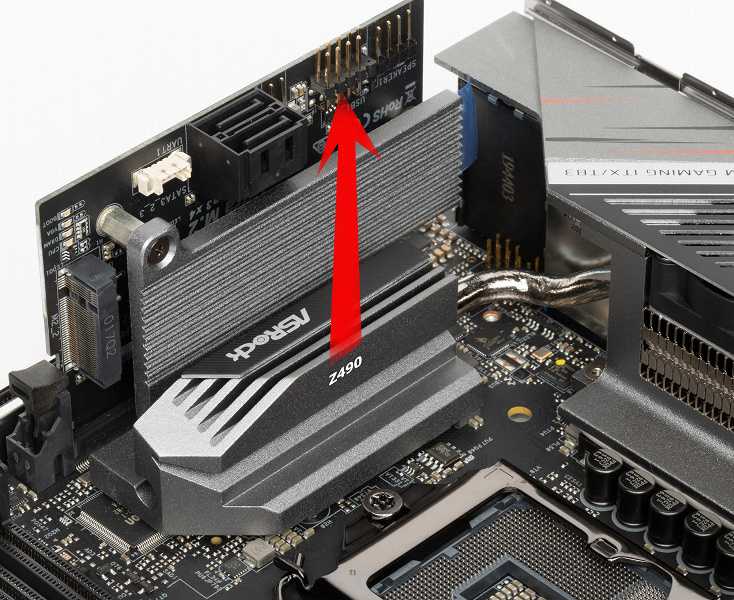 It has a special secondary fins structure that enhances heat transfer performance.
It has a special secondary fins structure that enhances heat transfer performance.
Louver Directed Flow:
— Heat flow that goes through fins will enter from the leading edge of the louver and is then directed by other louvers or fins. This louver directed flow can greatly improve heat transfer performance.
Direct-Touch Heatpipe II:
— With an extra large 8mm heat pipe and made from a new manufacturing process to narrow the gap between the heat pipe and heatsink, new Direct-Touch Heatpipe II greatly helps transfer heat on MOSFETs.
AORUS M.2 Thermal Guard:
GIGABYTE Ultra-Efficient M.2 Thermal Guard:
— With durability in mind, GIGABYTE provides a thermal solution for M.2 SSD devices. The M.2 Thermal Guard prevents throttling and bottlenecks from high speed M.2 SSDs as it helps to dissipate heat before it becomes an issue.
Smart Fan 5:
— With Smart Fan 5 users can ensure that their gaming PC can maintain its performance while staying cool. Smart Fan 5 allows users to interchange their fan headers to reflect different thermal sensors at different locations on the motherboard. Not only that, with Smart Fan 5 more hybrid fan headers that support both PWM and Voltage mode fans have been introduced to make the motherboard more liquid cooling friendly.
Not only that, with Smart Fan 5 more hybrid fan headers that support both PWM and Voltage mode fans have been introduced to make the motherboard more liquid cooling friendly.
— 8 Fan / Water Pump Connectors
— 7 Temperature Sensors
— 2 External Temperature Sensors
— All Hybrid Fan Headers
— Interoperable Fans and Sensors
— Supports High Current Fans up to 24W(2A x 12V) with Over-Current Protection
— Intuitive UI for Fan Control
— Different models have a different number of fan pin headers and temperature sensors. Smart Fan 5 function may vary by model.
Next generation connectivity:
— A high-end product needs to be future-proof so your system stays up-to-date with the latest technology. Z490 AORUS provides all next generation network, storage, and WIFI connectivity to keep you up to speed.
Intel 2.5GbE LAN Onboard:
2X Faster than ever:
— Adoption of 2.5G LAN provide up to 2.5 GbE network connectivity, with at least two times faster transfer speeds compared to general 1GbE networking.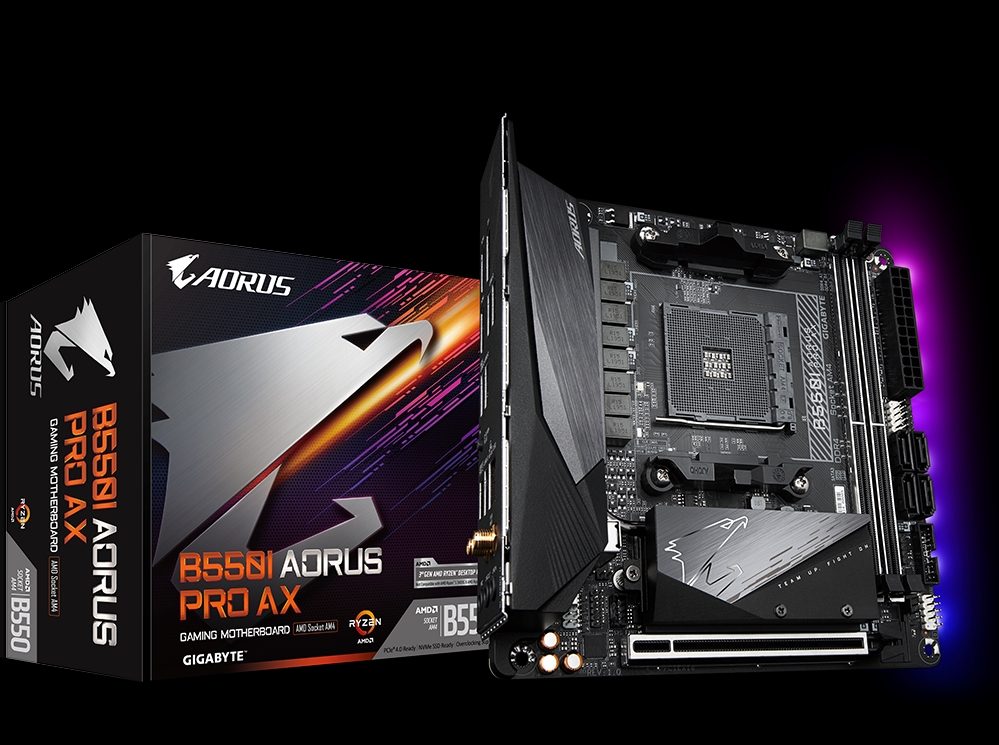 It´s perfectly suit for gamers and streamer with ultimate and smooth online experience. It also backward compatible with Multi-Gig(10/100/1000/2500Mbps) RJ-45 ethernet.
It´s perfectly suit for gamers and streamer with ultimate and smooth online experience. It also backward compatible with Multi-Gig(10/100/1000/2500Mbps) RJ-45 ethernet.
New Introduce Intel® WiFi 6 802.11ax + BT 5 Module:
— Intel Wireless solution supports 802.11ax, enables gigabit wireless performance, provides smooth video streaming, better gaming experience, few dropped connections and speeds up to 2.4Gbps*. Moreover, Bluetooth 5 provides 4X range over BT 4.2 and with faster transmission.
Benefit of WiFi 6:
— 5.5X throughput than 802.11ac 1×1*
— 4X better network capacity, no traffic jams especially in those dense area with lots of devices
— Network efficiency increase for better user experience
Audio solution with dts immersive sound experience:
Hi-Res Audio:
— Hi-Res Audio certified, meaning that the product is capable of reproducing frequencies up to 40kHz or above which ensures user with the best audio quality at all times.
ALC1220-VB Immersive Gaming ViBes:
All New Realtek High-End HD Audio Codec:
— ALC1220 120dB(A) SNR HD Audio with Smart Headphone Amp automatically detects impedance of your head-worn audio device, preventing issues such as low volume and distortion.
With the new VB series audio controller, stream your voice to the world vibrantly with both front/rear microphone SNR up to 110/114dB(A).
Definitive aesthetics:
RGB FUSION 2.0:
Multi-Zone Light Show Design:
— Now offering more LED customizations than ever, users can truly adapt their PC to represent their lifestyle. With full RGB support and a redesigned RGB Fusion 2.0 application, the user has complete control over the LEDs which surround the motherboard.
RGB FUSION Software:
— With an integrated intuitive user interface, the RGB Fusion 2.0 provides you a better solution for customizing the lighting effects across all supported devices. From motherboards, graphics cards to the peripheral products, you can personalize your gaming rig with your own style and show off your build by sharing the profiles. In addition, the new gaming mode makes the lighting effects interactive with selected games to bring you the most immersive gaming experience.
GIGABYTE RGB Fusion APP:
— Don´t just make your PC shine, make it a work of art that friends will envy. With the GIGABYTE RGB Fusion mobile app users can watch as they control the lighting within their gaming PC. This gives users ease of access as they try and adjust colors and speeds for different modes, all this can be achieved away from the keyboard and monitor of their PC.
With the GIGABYTE RGB Fusion mobile app users can watch as they control the lighting within their gaming PC. This gives users ease of access as they try and adjust colors and speeds for different modes, all this can be achieved away from the keyboard and monitor of their PC.
Ultra durable:
— GIGABYTE is reputable for its product durability and high quality manufacturing process. Needless to say, we use the best components we can find for the Z490 AORUS motherboard and reinforce every slot to make each of them solid and durable.
2X PCIe Armor:
Ultra Durable™ PCIe Armor Industry Leading Ultra Durable™ PCIe Armor:
— The innovative one piece stainless steel shielding design from GIGABYTE reinforces the PCIe connectors to provide the extra strength required to support heavy graphics cards.
Ultra Durable™ Memory Armor:
— AORUS´ exclusive one piece stainless steel shielding design prevents against PCB distortion/twisting and plate bending, in addition to preventing any possible ESD interference.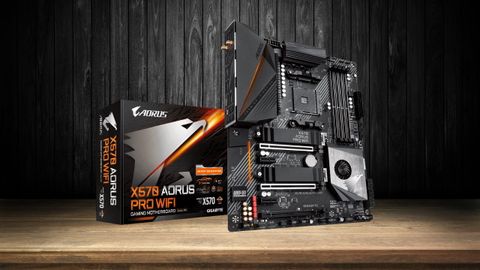
Solid Pin Power Connectors:
— Z490 AORUS motherboards feature solid plated ATX 24pin & ATX 12V 8pin + 4pin power connectors to offer a stable power supply during CPU overloading.
Solid Pin Power connector advantages:
— Larger contact area for electricity
— More metal quantity to sustain higher power and generated heat
— Ultra durable and longer lifespan
Q-Flash Plus:
— Update the BIOS easily without installing the CPU, memory and graphics card.
— With GIGABYTE Q-Flash Plus, you don’t need to install the CPU, memory and graphics card nor enter the BIOS menu to flash the BIOS. Just download and save a new BIOS file (rename to gigabyte.bin) on the USB flash drive, then press the dedicated Q-Flash Plus button and you’re good to go!
GIGABYTE BIOS & APP CENTER:
— Good software goes hand in hand with perfect hardware. Z490 AORUS PRO AX bundled several useful and intuitive software to help users to control every aspect of motherboard.
BIOS:
— New User Interface: All new EASY MODE shows important hardware information in one page including CPU clock, Memory, Storage, Fan.
— My Favorites: Add constantly used items into the favorite menu for quick access.
— Storage Information: Show all kinds of storage information including SATA, PCIE and M.2 interface.
— Changelog: List all changes before saving and exiting bios. Quickly review overall settings modification.
— Intuitive Load Line Curve: Clearly show each loadline calibration setting in an intuitive curve graph.
APP CENTER:
— GIGABYTE APP CENTER is a useful portal of all GIGABYTE MB utilities and drivers, you can choose any utility you want to install from APP CENTER and keep updated with the latest utilities and drivers version.
EasyTune™:
— GIGABYTE´s EasyTune™ is a simple and easy-to-use interface that allows users to fine-tune their system settings or adjust system and memory clocks and voltages in a Windows environment.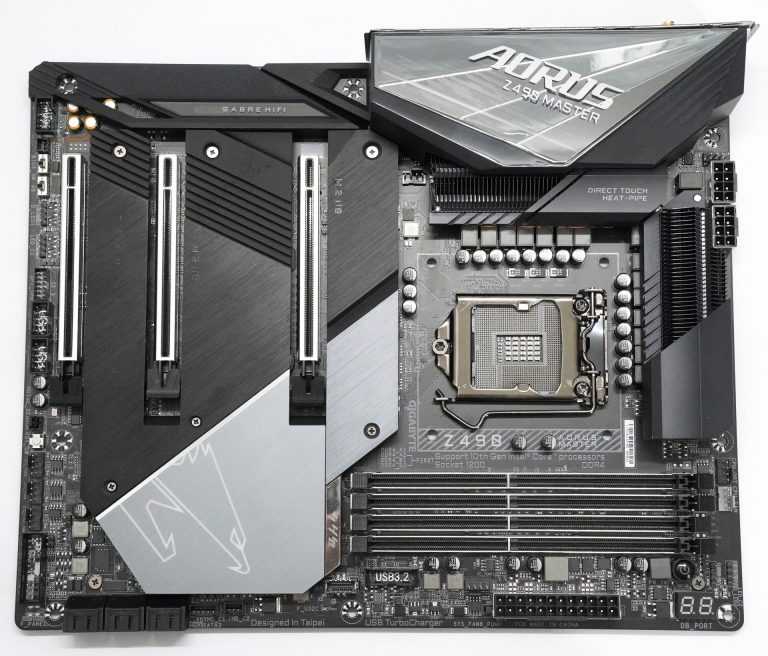 With Smart Quick Boost, one click is all it takes to automatically overclock your system, giving an added performance boost when you need it the most.
With Smart Quick Boost, one click is all it takes to automatically overclock your system, giving an added performance boost when you need it the most.
System Information Viewer:
— GIGABYTE System Information Viewer is a central location that gives you access to your current system status. Monitor components such as the clocks and processor, set your preferred fan speed profile, create alerts when temperatures get too high or record your system´s behavior; these are the possibilities of the System Information Viewer.
Features:
— Supports 10th Gen Intel® Core™ Series Processors
— Dual Channel Non-ECC Unbuffered DDR4, 4 DIMMs
— Intel® Optane™ Memory Ready
— Direct 12+1 Phases Digital VRM Solution with 55A DrMOS
— Shielded Memory Routing for Better Memory Overclocking
— Fins-Array II Heatsink and Direct Touch Heatpipe II
— Onboard Intel® WiFi 6 802.11ax 2T2R & BT5 with AORUS Antenna
— AMP-UP Audio with ALC1220-VB and WIMA for Rear 120dB SNR
— Blazing Fast Intel® 2. 5GbE LAN with cFosSpeed
5GbE LAN with cFosSpeed
— Dual Ultra-Fast NVMe PCIe 3.0 x4 M.2 with Thermal Guards
— RGB FUSION 2.0 with Multi-Zone Addressable LED Light Show Design, Support Addressable LED & RGB LED Strips
— Smart Fan 5 Features Multiple Temperature Sensors , Hybrid Fan Headers with FAN STOP
— Q-Flash Plus Update BIOS without Installing the CPU, Memory and Graphics Card
Specifications:
CPU:
— Support for 10th Generation Intel® Core™ i9 processors/Intel® Core™ i7 processors/Intel® Core™ i5 processors/Intel® Core™ i3 processors/Intel® Pentium® processors/Intel® Celeron® processors in the LGA1200 package
— L3 cache varies with CPU
Chipset:
— Intel® Z490 Express Chipset
Memory:
— 4 x DDR4 DIMM sockets supporting up to 128 GB (32 GB single DIMM capacity) of system memory
— Dual channel memory architecture
— Support for DDR4 5000(O.C.)/4933(O.C.)/4800(O.C.)/ 4700(O.C.)/ 4600(O.C.)/ 4500(O.C.)/ 4400(O.C.)/ 4300(O.C.)/4266(O.C.) / 4133(O.C.) / 4000(O. C.) / 3866(O.C.) / 3800(O.C.) / 3733(O.C.) / 3666(O.C.) / 3600(O.C.) / 3466(O.C.) / 3400(O.C.) / 3333(O.C.) / 3300(O.C.) / 3200(O.C.) / 3000(O.C.) / 2933 / 2800 / 2666 / 2400 / 2133 MHz memory modules
C.) / 3866(O.C.) / 3800(O.C.) / 3733(O.C.) / 3666(O.C.) / 3600(O.C.) / 3466(O.C.) / 3400(O.C.) / 3333(O.C.) / 3300(O.C.) / 3200(O.C.) / 3000(O.C.) / 2933 / 2800 / 2666 / 2400 / 2133 MHz memory modules
— To support 3200 MHz, you must use XMP memory.
— Support for ECC Un-buffered DIMM 1Rx8/2Rx8 memory modules (operate in non-ECC mode)
— Support for non-ECC Un-buffered DIMM 1Rx8/2Rx8/1Rx16 memory modules
— Support for Extreme Memory Profile (XMP) memory modules
Onboard Graphics:
— Integrated Graphics Processor-Intel® HD Graphics support:
— 1 x HDMI port, supporting a maximum resolution of 4096×2160@30 Hz
— Support for HDMI 1.4 version and HDCP 2.3.
— Maximum shared memory of 512 MB
Audio:
— Realtek® ALC1220-VB codec
— The back panel line out jack supports DSD audio.
— High Definition Audio
— 2/4/5.1/7.1-channel
— Support for S/PDIF Out
LAN:
— Intel® 2.5GbE LAN chip (2.5 Gbit/1 Gbit/100 Mbit)
Wireless Communication module:
— Intel® Wi-Fi 6 AX201
— WIFI a, b, g, n, ac with wave 2 features, ax, supporting 2. 4/5 GHz Dual-Band
4/5 GHz Dual-Band
— BLUETOOTH 5.1
— Support for 11ax 160MHz wireless standard and up to 2.4 Gbps data rate
— Actual data rate may vary depending on environment and equipment.
Expansion Slots:
— 1 x PCI Express x16 slot, running at x16 (PCIEX16)
— For optimum performance, if only one PCI Express graphics card is to be installed, be sure to install it in the PCIEX16 slot.
— 1 x PCI Express x16 slot, running at x8 (PCIEX8)
— The PCIEX8 slot shares bandwidth with the PCIEX16 slot. When the PCIEX8 slot is populated, the PCIEX16 slot operates at up to x8 mode.
— 1 x PCI Express x16 slot, running at x4 (PCIEX4)
— 2 x PCI Express x1 slots
Multi-Graphics Technology:
— Support for NVIDIA® Quad-GPU SLI™ and 2-Way NVIDIA® SLI™ technologies
— Support for AMD Quad-GPU CrossFire™ and 2-Way AMD CrossFire™ technologies
Storage Interface:
— 2 x M.2 connectors (Socket 3, M key, type 2242/2260/2280/22110 SATA and PCIe x4/x2 SSD support) (M2A_SB/M2M_SB)
— 6 x SATA 6Gb/s connectors
— Support for RAID 0, RAID 1, RAID 5, and RAID 10
— Refer to ´´1-8 Internal Connectors,´´ for the installation notices for the M. 2 and SATA connectors.
2 and SATA connectors.
— Intel® Optane™ Memory Ready
USB:
Chipset:
— 1 x USB Type-C™ port on the back panel, with USB 3.2 Gen 2 support
— 1 x USB Type-C™ port with USB 3.2 Gen 1 support, available through the internal USB header
— 2 x USB 3.2 Gen 2 Type-A ports (red) on the back panel
— 5 x USB 3.2 Gen 1 ports (3 ports on the back panel, 2 ports available through the internal USB header)
Chipset+2 USB 2.0 Hubs:
— 8 x USB 2.0/1.1 ports (4 ports on the back panel, 4 ports available through the internal USB headers)
Internal I/O Connectors:
— 1 x 24-pin ATX main power connector
— 1 x 8-pin ATX 12V power connector
— 1 x 4-pin ATX 12V power connector
— 1 x CPU fan header
— 1 x water cooling CPU fan header
— 4 x system fan headers
— 2 x system fan/water cooling pump headers
— 2 x addressable LED strip headers
— 2 x RGB LED strip headers
— 6 x SATA 6Gb/s connectors
— 2 x M.2 Socket 3 connectors
— 1 x front panel header
— 1 x front panel audio header
— 1 x USB Type-C™ header, with USB 3. 2 Gen 1 support
2 Gen 1 support
— 1 x USB 3.2 Gen 1 header
— 2 x USB 2.0/1.1 headers
— 2 x Thunderbolt™ add-in card connectors
— 1 x Trusted Platform Module header (For the GC-TPM2.0 SPI/GC-TPM2.0 SPI 2.0 module only)
— 1 x Clear CMOS jumper
— 2 x temperature sensor headers
— 1 x Q-Flash Plus button
Back Panel Connectors:
— 1 x USB Type-C™ port, with USB 3.2 Gen 2 support
— 2 x USB 3.2 Gen 2 Type-A ports (red)
— 3 x USB 3.2 Gen 1 ports
— 4 x USB 2.0/1.1 ports
— 2 x SMA antenna connectors (2T2R)
— 1 x HDMI port
— 1 x RJ-45 port
— 1 x optical S/PDIF Out connector
— 5 x audio jacks
I/O Controller:
— iTE® I/O Controller Chip
H/W Monitoring:
— Voltage detection
— Temperature detection
— Fan speed detection
— Water cooling flow rate detection
— Overheating warning
— Fan fail warning
— Fan speed control
BIOS:
— 1 x 256 Mbit flash
— Use of licensed AMI UEFI BIOS
— PnP 1.0a, DMI 2.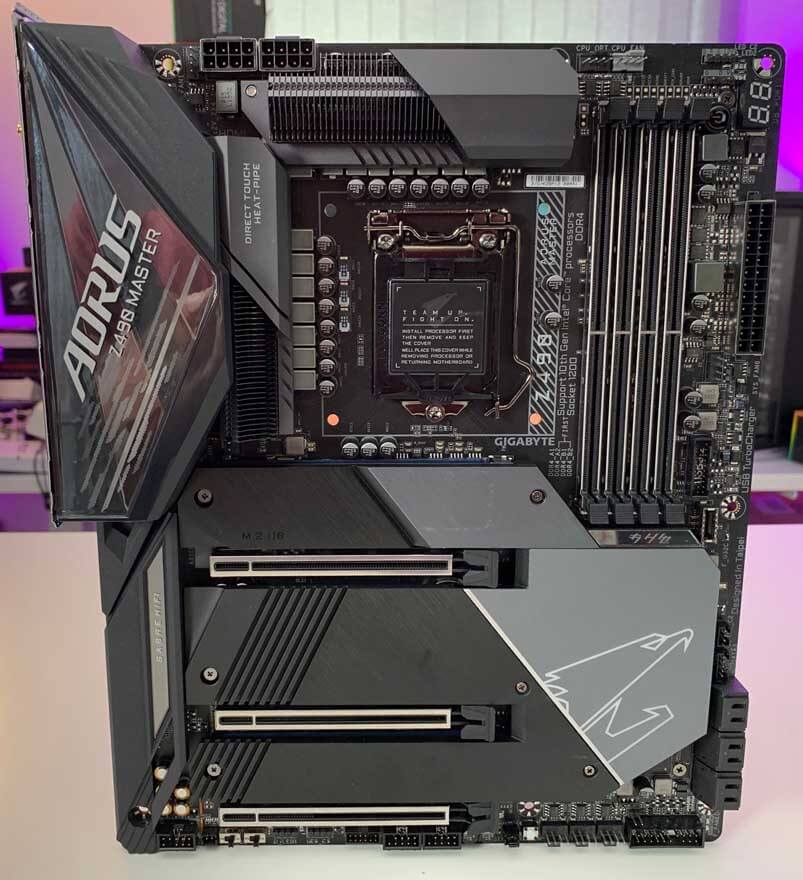 7, WfM 2.0, SM BIOS 2.7, ACPI 5.0
7, WfM 2.0, SM BIOS 2.7, ACPI 5.0
Unique Features:
— Support for APP Center
— Available applications in APP Center may vary by motherboard model. Supported functions of each application may also vary depending on motherboard specifications.
— @BIOS
— EasyTune
— Fast Boot
— Game Boost
— ON/OFF Charge
— RGB Fusion
— Smart Backup
— System Information Viewer
— Support for Q-Flash Plus
— Support for Q-Flash
— Support for Xpress Install
Bundled Software:
— Norton® Internet Security (OEM version)
— cFosSpeed
— XSplit Gamecaster + Broadcaster (12 months license)
Operating System:
— Support for Windows 10 64-bit
Form Factor:
— ATX Form Factor; 30.5cm x 24.4cm
Are you going to buy Gigabyte Z490 Aorus Pro AX Motherboard? All the products from Gigabyte have the best quality so that you can enjoy your activities without any complications.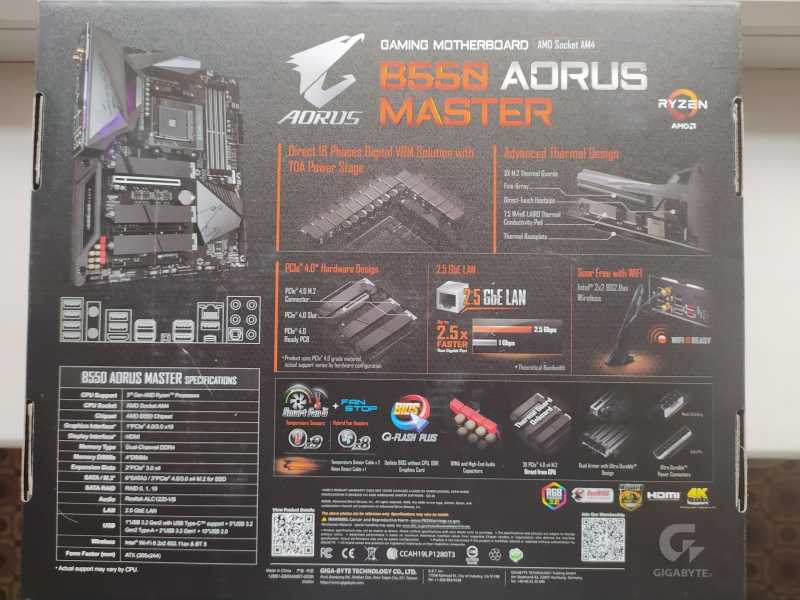 Place your order of Gigabyte Z490 Aorus Pro AX Motherboard and receive it in a few days. Our aim at techinn is to make good deals accessible to all. We have a large offering of electronics and computers equipment and life style items that is unique.
Place your order of Gigabyte Z490 Aorus Pro AX Motherboard and receive it in a few days. Our aim at techinn is to make good deals accessible to all. We have a large offering of electronics and computers equipment and life style items that is unique.
0024 3200MHz vs 2933MHz
3 vs 0
4 vs 2
3 vs 2
2 vs 1
4 vs 3
Why is Gigabyte Z490 Aorus Pro AX better than Gigabyte X570 Aorus Master?
- 600MHz faster RAM speed?
5000MHz vs 4400MHz - Does it have HDMI output?
- 1 more fan connectors?
8 vs 7 - 1 more USB 3.
 2 Gen 1 (USB-A) ports?
2 Gen 1 (USB-A) ports?
3 vs 2 - RAID 5 support?
- Has RGB backlight?
- 1 more PCIe x1 slots?
2 vs 1 - 30.85% cheaper?
328.37 € vs 474.90 €
Which comparisons are the most popular?
Gigabyte X570 Aorus Master
vs
Gigabyte X570S Aorus Master
Gigabyte Z490 Aorus Pro AX
vs
Gigabyte Z590 Aorus Pro AX
Gigabyte X570 Aorus Master
vs
Gigabyte X570S Aorus Elite
Gigabyte Z490 Aorus Pro AX
vs
Asus TUF B550M-Plus Gaming
Gigabyte X570 Aorus Master
vs
Asus ROG Strix X570-E Gaming
Gigabyte Z490 Aorus Pro AX
vs
NZXT N7 Z490
Gigabyte X570 Aorus Master
vs
Gigabyte X570 Aorus Ultra
Gigabyte Z490 Aorus Pro AX
vs
Gigabyte B560M Aorus Pro AX
Gigabyte X570 Aorus Master
vs
Gigabyte X570 Aorus Xtreme
Gigabyte Z490 Aorus Pro AX
vs
Gigabyte Z490 Aorus Master
Gigabyte X570 Aorus Master
vs
Asus ROG Crosshair VIII Dark Hero
Gigabyte Z490 Aorus Pro AX
vs
Gigabyte Z590 Aorus Elite AX Asus ROG Crosshair VIII Hero
Gigabyte X570 Aorus Master
vs
0003
GIGABYTE Z490 Aorus Pro Ax
0. 0 /10
0 /10
0 Reviews of Users
Functions
10.0 9000 /10
1 VOTES
9000
10.0 /10
1 Votes
Reviews not yet
performance
10.0 /10
1 VOTES
reviews yet not
Connection
9.0 /10
1 Votes
Reviews yet not
Reliability
10.0 /10 9000
1 VOTES 9000 .maximum memory capacity
Maximum memory capacity (RAM).
2.RAM speed
3200MHz
2933MHz
Can support faster memory which speeds up system performance.
3.speed RAM
4400MHz
5000MHz
The motherboard supports overclocking the RAM to a higher speed. By increasing the memory speed, we increase the performance of the computer.
4.memory slots
The more memory slots (DIMMs), the more RAM you can add to your computer. This is relevant for the upgrade, because. The memory bar can be installed in an empty slot, rather than replacing an already installed one.
This is relevant for the upgrade, because. The memory bar can be installed in an empty slot, rather than replacing an already installed one.
5.DDR memory version
Unknown. Help us offer a price. (Gigabyte X570 Aorus Master)
Unknown. Help us offer a price. (Gigabyte Z490 Aorus Pro AX)
DDR (Double Data Rate Synchronous Dynamic Random Access Memory) is the most common type of RAM. New versions of DDR memory support higher maximum speeds and are more energy efficient.
6.Memory channels
More memory channels increase the speed of data transfer between memory and processor.
7. Supports memory debug code
✔Gigabyte X570 Aorus Master
✔Gigabyte Z490 Aorus Pro AX
Memory debug code can detect and fix data corruption. It is used when necessary to avoid distortion, such as in scientific computing or when starting a server.
Ports
1.USB 3.2 Gen 2 (USB-A) ports
USB 3.2 Gen 2 supports speeds up to 10Gbps. It was previously known as USB 3.1 Gen 2. These ports use the older USB-A connector.
2.USB 3.2 Gen 1 (USB-A) ports
USB 3.2 Gen 1 supports speeds up to 5Gbps. It was previously known as USB 3.1 Gen 1 and USB 3.0. These ports use the old USB-A connector.
3.USB 3.2 Gen 2 (USB-C) ports
Unknown. Help us offer a price. (Gigabyte X570 Aorus Master)
Unknown. Help us offer a price. (Gigabyte Z490 Aorus Pro AX)
USB 3.2 Gen 2 supports speeds up to 10Gbps. It was previously known as USB 3.1 Gen 2. These ports use a USB-C connector.
4.USB 3.2 Gen 1 (USB-C) ports
Unknown. Help us offer a price. (Gigabyte X570 Aorus Master)
Unknown. Help us offer a price. (Gigabyte Z490 Aorus Pro AX)
USB 3. 2 Gen 1 supports speeds up to 5Gbps. It was previously known as USB 3.1 Gen 1 and USB 3.0. These ports use a USB-C connector.
2 Gen 1 supports speeds up to 5Gbps. It was previously known as USB 3.1 Gen 1 and USB 3.0. These ports use a USB-C connector.
5.USB 2.0 ports
The more USB 2.0 ports, the more USB 2.0 compatible devices you can connect to your computer.
6.USB 3.2 Gen 2×2 ports
Unknown. Help us offer a price. (Gigabyte X570 Aorus Master)
Unknown. Help us offer a price. (Gigabyte Z490 Aorus Pro AX)
USB 3.2 Gen 2×2 was introduced in 2019. It supports speeds up to 20Gbps and uses a USB-C connector.
7.USB ports 4 40Gbps
Unknown. Help us offer a price. (Gigabyte X570 Aorus Master)
Unknown. Help us offer a price. (Gigabyte Z490 Aorus Pro AX)
This version of USB 4 supports very high speeds up to 40 Gbps. Unlike USB 3.2, USB 4 can allocate bandwidth for video and data. These ports use a USB-C connector.
8. USB ports 4 20Gbps
USB ports 4 20Gbps
Unknown. Help us offer a price. (Gigabyte X570 Aorus Master)
Unknown. Help us offer a price. (Gigabyte Z490 Aorus Pro AX)
This version of USB 4 supports speeds up to 20Gbps. Unlike USB 3.2, USB 4 can allocate bandwidth for video and data. These ports use a USB-C connector.
9.Thunderbolt 4 ports
Unknown. Help us offer a price. (Gigabyte X570 Aorus Master)
Unknown. Help us offer a price. (Gigabyte Z490 Aorus Pro AX)
Number of Thunderbolt 4 compatible USB ports. These ports support speeds up to 40 Gb/s, including a minimum PCIe speed of 32 Gb/s. This ensures that it can support two external 4K screens (or one external 8K screen).
Connectors
1.USB 3.2 Gen 1 ports (via expansion)
Unknown. Help us offer a price. (Gigabyte X570 Aorus Master)
Unknown. Help us offer a price. (Gigabyte Z490 Aorus Pro AX)
The number of USB 3. 2 Gen 1 ports that can be added using the USB connectors on the motherboard.
2 Gen 1 ports that can be added using the USB connectors on the motherboard.
2.USB 3.2 Gen 2 ports (via expansion)
Unknown. Help us offer a price. (Gigabyte X570 Aorus Master)
Unknown. Help us offer a price. (Gigabyte Z490 Aorus Pro AX)
The number of USB 3.2 Gen 2 ports that can be added using the USB headers on the motherboard.
3 USB 2.0 ports (pass-through expanders)
Number of USB 2.0 ports that can be added via pins (USB headers) on the motherboard.
4.SATA 3 connectors
SATA is an interface used to connect storage devices such as hard drives and Blu-ray discs. The native data transfer rate of SATA 3 is 6 Gb/s, which is twice as high as that of SATA 2. It can be useful to use an SSD, because it improves the speed.
5. fan headers
These are the contact surfaces on the motherboard to which fans can be connected.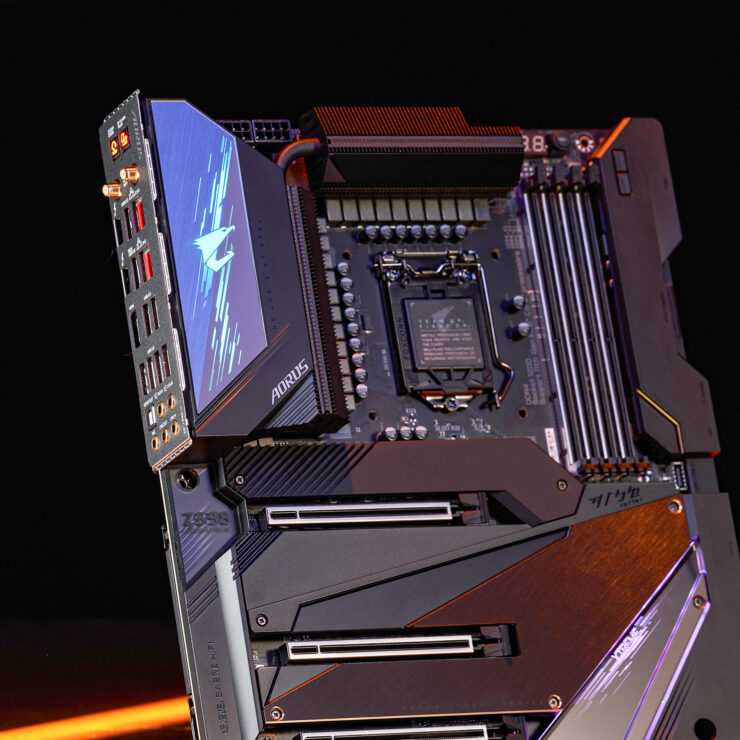 Fans, of course, can also be connected directly to the power supply, but by connecting them through the motherboard, we get the ability to control devices through software.
Fans, of course, can also be connected directly to the power supply, but by connecting them through the motherboard, we get the ability to control devices through software.
6.USB 3.0 ports (pass-through expanders)
The motherboard has pins in the form of male connectors to which additional USB ports can be connected.
7.M.2 connector
M.2 is an interface used to connect various devices, mainly storage devices such as M.2 SSD. It is a revision of mSATA and supports much higher data transfer rates.
8. There is a TPM connector
✔Gigabyte X570 Aorus Master
✔Gigabyte Z490 Aorus Pro AX
Trusted Platform Module (TPM) is a component that significantly improves security. For example, it enables the creation of RSA keys in a secure environment, minimizing the risk of hackers.
9.U.2 connectors
U. 2 is an interface used to connect various types of devices, mainly storage devices. It is equal in performance to M.2, but U.2 SSD drives are made in the format of regular 2.5″ SATA drives, and because of this they support much larger volumes than mSATA drives.
2 is an interface used to connect various types of devices, mainly storage devices. It is equal in performance to M.2, but U.2 SSD drives are made in the format of regular 2.5″ SATA drives, and because of this they support much larger volumes than mSATA drives.
Expansion slots
Unknown Help us, offer a price (Gigabyte X570 Aorus Master)
PCIe slots are designed to connect peripherals to the motherboard, mainly graphic cards, less often other cards: for example, sound and network «x16» indicates the number of tracks. The more lanes, the higher the data transfer rate, PCIe 3.0 offers faster speed than PCIe 2.0 and higher performance.0003
2.PCIe 4.0 x16 slots
PCIe slots allow you to connect various components such as video cards and SSDs to the motherboard. The number of data lanes (determined by the number after the «x») determines the data rate. PCIe 4.0 provides transfer speeds of 16GT/s, doubling the bandwidth provided by PCIe 3. 0.
0.
3.PCIe x1 slots
PCIe slots are designed to connect peripherals to the motherboard, mainly graphics cards, less often other cards: for example, sound and network. «x1» indicates the number of tracks. The more tracks, the higher the data transfer rate.
4.PCI slots
PCI slots are designed to connect peripherals to the motherboard, mainly graphics cards, less often other cards: for example, sound and network cards. PCI technology has been superseded by PCI Express technology, which offers higher data transfer speeds, but there are still many cards using PCI slots these days.
5.PCIe 2.0 x16 slots
PCIe slots are designed to connect peripherals to the motherboard, mainly graphics cards, less often other cards: for example, sound and network. «x16» indicates the number of tracks. The more tracks, the higher the data transfer rate.
6.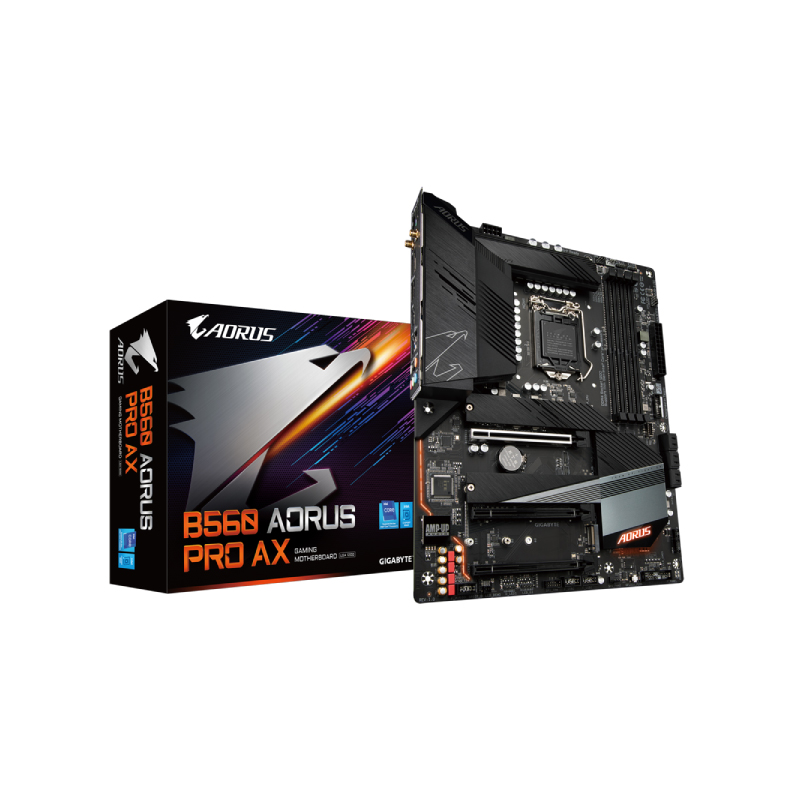 PCIe x4 slots
PCIe x4 slots
PCIe slots are designed to connect peripherals to the motherboard, mainly graphics cards, less often other cards: for example, sound and network. «x4» indicates the number of tracks. The more tracks, the higher the data transfer rate.
7.PCIe x8 slots
PCIe slots are designed to connect peripherals to the motherboard, mainly graphics cards, less often other cards: for example, sound and network. «x8» indicates the number of tracks. The more tracks, the higher the data transfer rate.
Audio
1.signal-to-noise ratio (SNR)
When a digital signal is converted to analog (for example, when playing sound through speakers or headphones), a certain amount of noise is carried in the signal. Higher SNR means less noise and better audio quality when converting.
2.audio channels
Each channel is a separate stream of audio information. The more channels, the more realistic the experience, such as surround sound.
The more channels, the more realistic the experience, such as surround sound.
3.S/PDIF out port
✔Gigabyte X570 Aorus Master
✔Gigabyte Z490 Aorus Pro AX
S/PDIF is an interface used to transmit high quality digital audio.
4.audio sockets
The more sockets, the more audio devices (speakers, microphones) can be connected.
Memory
1.RAID 1 support
✔Gigabyte X570 Aorus Master
✔Gigabyte Z490 Aorus Pro AX
RAID is a storage technology that combines multiple disks in one array. RAID 1 is a technology of mirror duplication of information on disks. Provides increased data storage security, as if one drive fails, the data will be available from another drive.
2.RAID 10 (1+0) support
✔Gigabyte X570 Aorus Master
✔Gigabyte Z490 Aorus Pro AX
RAID is a data storage technology that combines multiple disks in one array. RAID 10(1+0) is a technology of striping and mirror duplication of information on disks. Has higher processing capacity and performance compared to a single drive. It also provides enhanced data storage security, as if one drive fails, the data will be available from another drive.
RAID 10(1+0) is a technology of striping and mirror duplication of information on disks. Has higher processing capacity and performance compared to a single drive. It also provides enhanced data storage security, as if one drive fails, the data will be available from another drive.
3.RAID 5 support
✖Gigabyte X570 Aorus Master
✔Gigabyte Z490 Aorus Pro AX
RAID is a data storage technology that combines multiple disks in one array. RAID 5 is a disk striping technology. It has higher performance compared to a separate disk. It also provides enhanced data storage security, as if one disk fails, the data will still be available on the other, thanks to the use of non-dedicated parity disk technology.
4.RAID 0 supported
✔Gigabyte X570 Aorus Master
✔Gigabyte Z490 Aorus Pro AX
RAID is a data storage technology that combines multiple disks in one array. RAID 0 is a disk striping technology.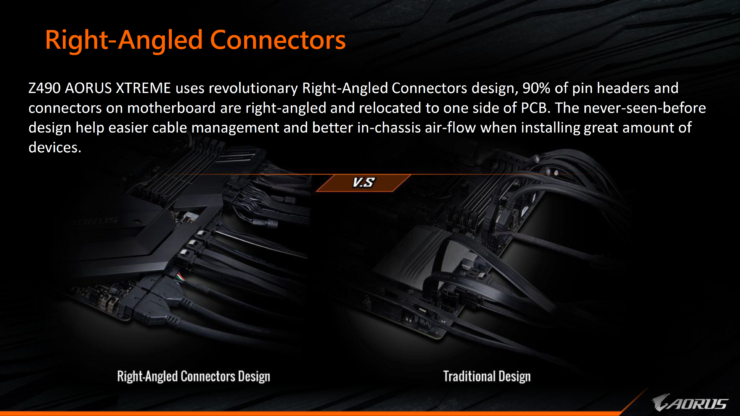 Has higher processing capacity and performance compared to a single drive. The disadvantage is that if one drive fails, data will be lost on all drives.
Has higher processing capacity and performance compared to a single drive. The disadvantage is that if one drive fails, data will be lost on all drives.
5.Support RAID 0+1
✖Gigabyte X570 Aorus Master
✖Gigabyte Z490 Aorus Pro AX
RAID is a data storage technology that combines multiple drives in one array. RAID 0+1 is a technology of striping and mirror duplication of information on disks. It has higher processing capacity and performance compared to a single drive. It also provides increased data storage security, because if one drive fails, the data will be available from another drive.
Price comparison
Cancel
Which motherboards are better?
Review GIGABYTE Z590 AORUS PRO AX. Motherboard tests, overclocking Intel Core i5-11600K
Despite the fact that motherboards based on the Z590 chipset have been available since February, the full potential of new products can only be revealed with the 11th generation of Intel processors, and they, in turn, came out later.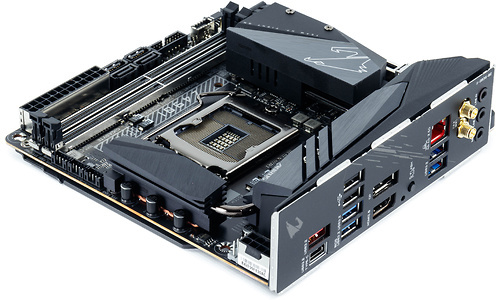 Of its key changes, an increase in the number of lines and speed of DMI 3.0, an increase in the number of high-speed USB 3.2 gen.2. And part of it is the 11th generation processors, this is an increase in the number of PCIe lanes from 16 to 20, support for PCI 4.0. Manufacturers of motherboards supplement all this by improving the power subsystem and overclocking capabilities.
Of its key changes, an increase in the number of lines and speed of DMI 3.0, an increase in the number of high-speed USB 3.2 gen.2. And part of it is the 11th generation processors, this is an increase in the number of PCIe lanes from 16 to 20, support for PCI 4.0. Manufacturers of motherboards supplement all this by improving the power subsystem and overclocking capabilities.
We took a closer look at this chipset by doing a detailed test of the Z590 AORUS PRO AX with an Intel Core i5-11600K processor.
Equipment
Complete with the motherboard, the buyer receives an external Wi-Fi antenna, two thermal sensors, four SATA cables, an LED strip cable, screws for installing M.2 drives, and a user manual.
The I/O port cap is fixed initially on the board, like in premium solutions.
Everything is collected in a box, decorated in the style of AORUS. On the reverse side of the detailed information on technical characteristics.
On the reverse side of the detailed information on technical characteristics.
Appearance
Made in ATX size. Appearance sustained. There are no bright and catchy design elements.
The front side of the printed circuit board is covered with metal heatsinks and a plastic casing around the input/output ports.
In the area of the casing there is an illuminated area with proprietary Fusion 2.0 illumination. It is synchronized and controlled.
The AORUS brand logo is applied on the outer surface of the heatsink installed on the chipset. It has no backlight.
The reverse side of the PCB is free. Additional reinforcement was not used, leaving it for older motherboards in the line.
Heat sinks prepared for M. 2 drives in GIGABYTE Z590 AORUS PRO AX is a two-piece cooling system. Removable thermal interface top and base. This significantly increases the efficiency of heat dissipation.
2 drives in GIGABYTE Z590 AORUS PRO AX is a two-piece cooling system. Removable thermal interface top and base. This significantly increases the efficiency of heat dissipation.
Increased the number of M.2 slots. It has four such slots at once. At the same time, the top one receives four PCI lines directly from the Intel gen.11 processor. The slot receiving lines from the chipset operates in PCI 3.0 mode.
The speed of data exchange has increased. Now there is support for PCI 4.0, again only if a new generation of processors is installed. By the way, the last generation GIGABYTE Z490 AORUS PRO AX will also receive increased data exchange rates when assembled with the 11th generation.
Six SATA are also allocated for the disk subsystem. They are placed as a group.
Three full-size PCIe slots are available for video cards and expansion cards, one of which is capable of operating in x16 mode (reinforced with a metal shell), and the other two in x4 mode.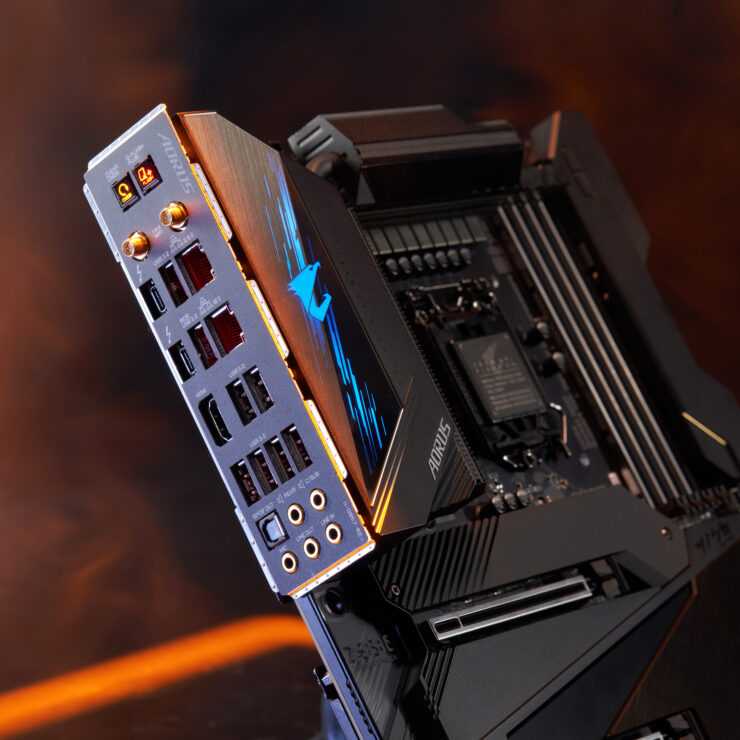 With the new generation of processors, work is in PCI 4.0 mode.
With the new generation of processors, work is in PCI 4.0 mode.
Improvements have affected the power subsystem in the GIGABYTE Z590 AORUS PRO AX. The 12+1 scheme was applied. With load up to 90A for each phase. Digital VRM module.
Two radiators with additional fins and interconnected with copper tubes are installed on the power circuit. Looking ahead, even in the overclocking mode with an increase in voltage, they effectively removed heat from the power elements.
To connect the power cables, one ATX-connector with all-metal contacts, as well as 8- and 4-pin connectors are allocated. Provides reliable contact and extended service life.
RAM slots are also with Ultra Durable shielding. Frequency up to 5400 MHz is supported. The total volume is up to 128 GB.
The 2. 5 gigabit Intel I225-V controller is responsible for networking. In addition, it is a high-speed Intel Wi-Fi 6 AX200 module with an external antenna for improved reception quality. For wireless peripherals and acoustics, there is Bluetooth 5.1.
5 gigabit Intel I225-V controller is responsible for networking. In addition, it is a high-speed Intel Wi-Fi 6 AX200 module with an external antenna for improved reception quality. For wireless peripherals and acoustics, there is Bluetooth 5.1.
Improved sound subsystem. Top HD codec Realtek ALC4080 with Hi-Res Audio. «Audiophile» capacitors. The zone is shielded.
In addition to the sensors for temperature control, there are two connectors for connecting cables with temperature sensors included in the delivery.
To connect USB connectors on the front panel of the PC case, the motherboard has connectors: one USB 3.2 gen.2, two USB 3.2 gen.1, two USB 2.0.
A total of seven FAN connectors with PWM control are available for organizing active cooling. Some of them provide for the possibility of connecting a liquid cooling pump.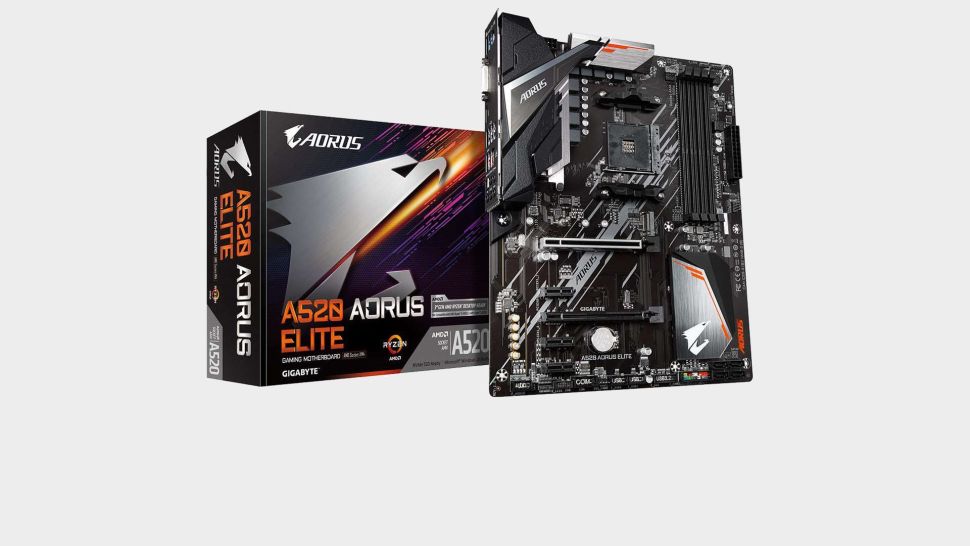
External ARGB and RGB LED strips and accessories are supported. Two connectors for each type.
The motherboard does not have a digital LED panel and buttons for starting in an open stand. Only BIOS update button.
I / O panel available: four USB 3.2 Gen 1, Wi-Fi antenna sockets, four USB 2.0, DisplayPort, four USB 3.2 Gen 2, USB Type-C port (USB 3.2 Gen 2×2 interface), RJ-45 port 2 .5GbE LAN controller, six audio jacks, S/PDIF connector.
9BIOS 0003
The GIGABYTE Z590 AORUS PRO AX was tested with the current BIOS version T186 at the time of publication. Characteristic for AORUS BIOS Setup shell design. By default, the Favorite Options page opens. Here you can collect frequently used settings.
Manual overclocking section with detailed tools for adjusting the operation of the processor, memory and power subsystem.
Additional settings.
System data and monitoring.
System boot options.
A simplified version of EASY MODE for controlling key instruments and parameters.
Tests
Tests were conducted with Intel Core i5-11600K, GIGABYTE AORUS RGB DDR4-3600 RAM. The system was assembled without a discrete graphics card for a detailed study of the Intel UHD Graphics 750.
For comparison, here are the results obtained during the tests of the Intel Core i5-10600K.
Acceleration
We also conducted a study on the potential for manual overclocking. With the Intel Core i5-11600K, we got stable performance at 5. 0 GHz at 1.45 V.
0 GHz at 1.45 V.
GIGABYTE AORUS RGB DDR4-3600 memory overclocked to 3900 MHz with CL18 timings.
GIGABYTE Z590 AORUS PRO AX Summary
The Z590 AORUS PRO AX motherboard is the optimal platform for gaming or high-performance system based on 11 Gen Intel Core processors, offering a balance between cost and quality of technical equipment. High-speed PCI 4.0 interface, efficient cooling of M.2 drives, improved power subsystem, a large number of USB ports, simple appearance, shielded DDR4 and PCIe connectors, high-speed Wi-Fi 6AX, all-metal contacts of power connectors. Separately, we note a good overclocking potential in manual mode.
GIGABYTE Z590 AORUS PRO AX wins the well-deserved «Gold. MegaObzor.com Editor’s Choice» award.
master in all disciplines GECID.com. Page 1
::>Motherboards
>2020
> GIGABYTE Z490 AORUS MASTER
01-06-2020
Page 1
Page 2
One page
The last embargoes have been dropped, and now we can review and evaluate 10th generation Intel Core desktop processors (Comet Lake-S) and motherboards for the new Socket LGA1200 in all details.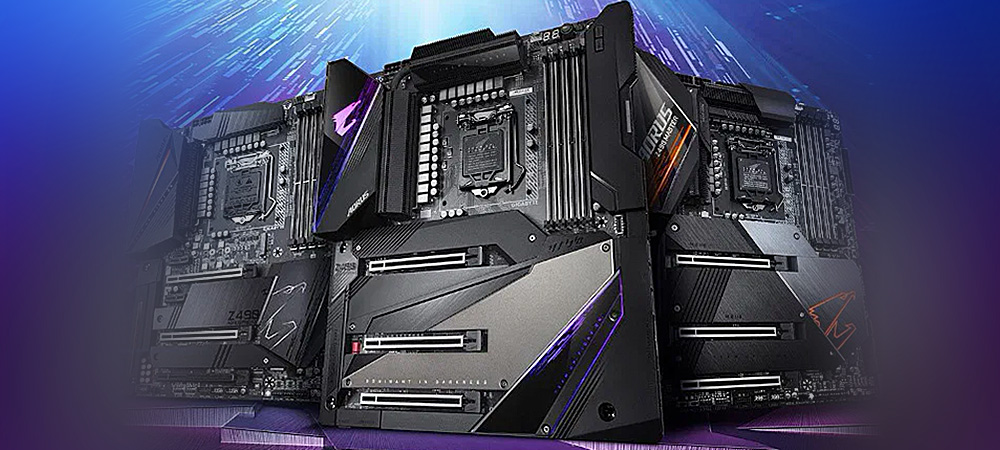
Let’s start with the flagship models based on the Intel Z490 chipset, but in the near future we will definitely test more affordable solutions from different manufacturers. First, let’s look at the differences from the previous flagship Intel Z390.
And there are very few of them. The number and version of PCIe lanes, the number and configuration of USB and SATA ports, support for RAID arrays and additional technologies all match. Intel Z490 only boasts support for a 2.5-gigabit LAN controller at the physical level, the transition from Wi-Fi 5 to Wi-Fi 6 and the newer version 14 of the Intel Management Engine Firmware (Intel ME FW) instead of 12. On the official pages of others there are no differences.
Intel 400 Series Chipset Technical Specification Summary Table:
|
Model |
Intel Z490 |
Intel Z390 |
Intel Q470 |
Intel h570 |
Intel B460 |
Intel h510 |
|
Overclocking support |
Yes |
Yes |
No |
No |
No |
No |
|
Number of PCI Express lanes (PCIe version) |
24 (3. |
24 (3.0) |
24 (3.0) |
20 (3.0) |
16 (3.0) |
6 (3.0) |
|
Maximum number of USB 3.2 Gen 2 / USB 3.2 Gen 1 / USB 2.0 ports |
6 / 10 / 14 |
6 / 10 / 14 |
6 / 10 / 14 |
4 / 8 / 14 |
0 / 8 / 12 |
0 / 4 / 10 |
|
Total number of USB ports |
14 |
14 |
14 |
14 |
12 |
10 |
|
SATA 6Gb/s |
6 |
6 |
6 |
6 |
6 |
4 |
|
RAID 0, 1, 5, 10 |
Yes |
Yes |
Yes |
Yes |
Yes |
No |
|
Intel Wireless |
Intel Wi-Fi 6 AX201 |
Intel Wi-Fi 5 |
Intel Wi-Fi 6 AX201 |
Intel Wi-Fi 6 AX201 |
Intel Wi-Fi 6 AX201 |
No |
|
Intel Smart Sound |
Yes |
Yes |
Yes |
Yes |
Yes |
No |
|
TDP, W |
6 |
6 |
6 |
6 |
6 |
6 |
|
Recommended price, $ |
50 |
– |
47 |
32 |
28 |
26 |
So it turns out that Intel has shifted the main work on creating functionally attractive motherboards to partners.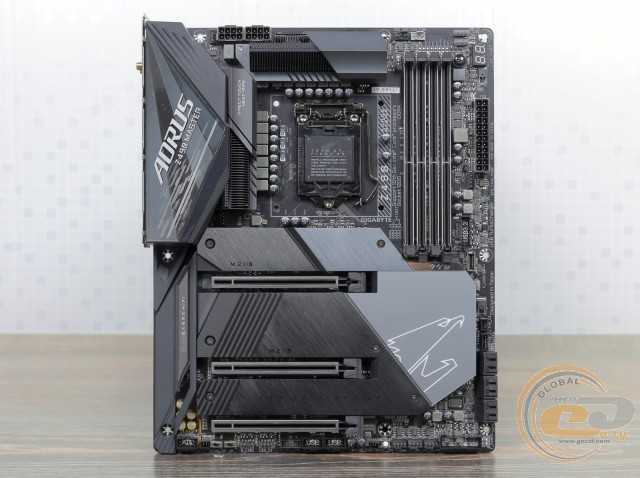 They need to think about how to attract customers and how to fight off competitors in all price segments.
They need to think about how to attract customers and how to fight off competitors in all price segments.
Let’s get acquainted with the Intel Z490 on the example of the motherboard GIGABYTE Z490 AORUS MASTER . This is one of the top representatives that received a 14-phase power subsystem, an efficient passive cooling system, a 2.5-gigabit LAN controller, a Wi-Fi 6 wireless interface module, and a number of other advantages.
Specification
|
Model |
GIGABYTE Z490 AORUS MASTER (rev. 1.x) |
|
Chipset |
Intel Z490 |
|
Processor socket |
Socket LGA1200 |
|
Supported processors |
10th Gen Intel Core i9 / Core i7 / Core i5 / Core i3 / Pentium / Celeron for Socket LGA1200 9 Platform0003 |
|
Memory support |
4 x DIMM slots supporting up to 128 GB of memory up to DDR4-5000 (OC) MHz for Core i9 / i7 DDR4-2666MHz for Core i5/i3/Pentium/Celeron |
|
Expansion slots |
1 x PCI Express 3. 1 x PCI Express 3.0 x16 (x8) 1 x PCI Express 3.0 x16 (x4) Support for NVIDIA Quad-GPU SLI and 2-Way NVIDIA SLI AMD Quad-GPU CrossFire and 2-Way AMD CrossFire |
|
Disk Subsystem |
1 x M.2 Socket 3 (M.2 2242, M.2 2260, M.2 2280, M.2 22110; PCIe x4/x2) (M2P_SB) 1 x M.2 Socket 3 (M.2 2242, M.2 2260, M.2 2280, M.2 22110; SATA and PCIe x4/x2) (M2A_CPU) 1 x M.2 Socket 3 (M.2 2242, M.2 2260, M.2 2280, M.2 22110; SATA and PCIe x4/x2) (M2M_SB) 6 x SATA 6Gb/s RAID 0, RAID 1, RAID 5, RAID 10 Intel Optane Memory Ready |
|
LAN |
1 x Intel I225-V (10/100/1000/2500 Mbps) |
|
WiFi / Bluetooth |
Intel Wi-Fi 6 AX201 (802.11a/b/g/n/ac wave 2/ax Wi-Fi (2.4 / 5 GHz) + Bluetooth 5.0) |
|
Sound subsystem |
8-channel Realtek ALC1220-VB + ESS ES9118EQ DAC |
|
Food |
1 x 24-pin ATX power connector 2 x 8-pin ATX12V power connectors |
|
Fans |
2 x CPU fan connectors (4-pin) 4 x system fan headers (4-pin) 2 x system fan / coolant connectors (4-pin) |
|
Cooling |
Aluminum heatsink based on chipset Aluminum heatsinks on the elements of the power subsystem, connected by a heat pipe |
|
External I/O ports |
1 x HDMI 1 x USB 3. 3 x USB 3.2 Gen 2 Type-A 2 x USB 3.2 Gen1 4 x USB 2.0/1.1 1 x RJ45 1 x Optical S/PDIF Out 5 x 3.5 mm audio 1 x Q-Flash Plus button 1 x Clear CMOS button 2 x SMA connectors for Wi-Fi module antenna |
|
Internal I/O ports |
1 x USB 3.2 Gen 2 Type-C 1 x USB 3.2 Gen1 2 x USB 2.0/1.1 2 x Thunderbolt |
|
BIOS |
2 x 256 Mbit Flash ROM AMI UEFI BIOS, DualBIOS support PnP 1.0a, DMI 2.7, WfM 2.0, SM BIOS 2.7, ACPI 5.0 |
|
Form factor |
ATX 305 x 244 mm |
|
Manufacturer website |
GIGABYTE New BIOS and driver versions can be downloaded from support page |
Packaging and Contents
GIGABYTE Z49 Motherboard0 AORUS MASTER pleases with a nice and informative packaging. On its sides there is a list of technical characteristics, key functional advantages and an image of the model itself.
On its sides there is a list of technical characteristics, key functional advantages and an image of the model itself.
In the box we found the following set of accessories:
- driver and software disc
- paper documentation set
- four SATA cables
- antenna for Wi-Fi module
- two extensions for RGB LED strips
- one cable for noise detection (noise detection)
- two thermistor cables
- G Connector kit
Design and features of the board
GIGABYTE Z490 AORUS MASTER looks very stylish due to the restrained color scheme and spectacular heatsinks for the chipset cooling systems, M.2 drives and the VRM block. It gives the impression of an armored warrior, ready to support you in any tasks and games.
LED lighting is integrated into the chipset heatsink and shroud above the interface panel. It supports RGB FUSION 2.0 technology with millions of colors and 12 modes. If this is not enough, then the board has four pads for connecting LED strips. The two labeled (D_LED1, D_LED2) are designed for addressable lighting solutions with a maximum current of 5 A (5 V) and a maximum of 1000 LEDs. And to connect RGB strips with a current of 2 A (12V / G / R / B), you should use the connectors LED_C1 and LED_C2. Do not confuse.
If this is not enough, then the board has four pads for connecting LED strips. The two labeled (D_LED1, D_LED2) are designed for addressable lighting solutions with a maximum current of 5 A (5 V) and a maximum of 1000 LEDs. And to connect RGB strips with a current of 2 A (12V / G / R / B), you should use the connectors LED_C1 and LED_C2. Do not confuse.
The reverse side of the motherboard is also clad in light armor. Its main task is to protect the textolite from bending and mechanical damage. He also takes an active part in the removal of heat from the VRM zone through thermal pads. Under the casing near the processor socket, seven doublers (doublers) of the power subsystem are clearly visible. We will return to them a little later.
The layout of the on-board elements of the GIGABYTE Z490 AORUS MASTER did not cause any complaints: overall video cards do not block access to SATA ports and DIMM slots. Although we expected to see latches on DIMM slots only on one side. And, of course, it will not be very convenient to change M.2 drives often, but this is the price for their efficient cooling.
And, of course, it will not be very convenient to change M.2 drives often, but this is the price for their efficient cooling.
Most of the connectors and internal interfaces are nestled at the bottom of the board. Here we found:
- front panel audio socket
- switch between main and spare BIOS chip (BIOS_SW)
- SB switch for selecting the BIOS operating mode (DualBIOS or Single BIOS)
- two sockets for connecting LED strips
- Socket for connecting the Trusted Platform Module (TPM)
- two internal USB 2.0 headers for up to four external USB 2.0 ports
- connector for connecting the complete noise detection cable for monitoring the noise level inside the system housing
- reset button
- BIOS reset jumper
- socket for temperature sensor connection
- three blocks for fans
- block for connecting elements of the front panel
- Status LED indicators for CPU, RAM, GPU and OS operation
The disk subsystem is represented by six SATA 6 Gb / s ports and three M.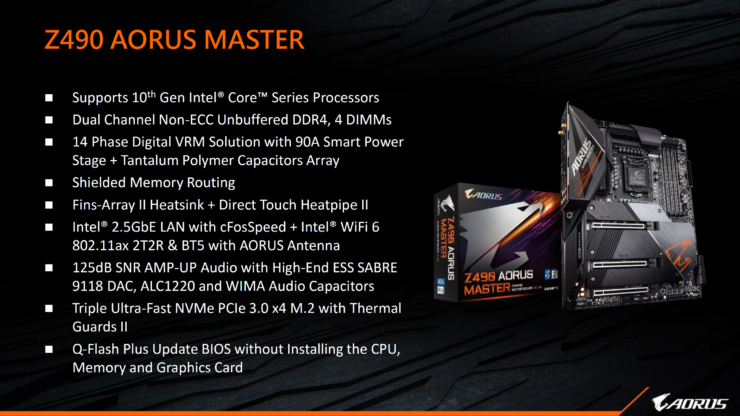 2 Socket 3 interfaces (M.2 2242, M.2 2260, M.2 2280, M.2 22110). The first one («M2P_SB»), which is closer to the processor socket, does not support SATA models. But only for him is declared support for the PCIe 4.0 interface. True, you will not be able to use it with 10th generation Intel Core processors (Comet Lake-S) — you will have to wait for the release of Intel Core 11 (Rocket Lake-S) at the end of this year or early next year. The remaining two work correctly with two types of interfaces, but have their own limitations:
2 Socket 3 interfaces (M.2 2242, M.2 2260, M.2 2280, M.2 22110). The first one («M2P_SB»), which is closer to the processor socket, does not support SATA models. But only for him is declared support for the PCIe 4.0 interface. True, you will not be able to use it with 10th generation Intel Core processors (Comet Lake-S) — you will have to wait for the release of Intel Core 11 (Rocket Lake-S) at the end of this year or early next year. The remaining two work correctly with two types of interfaces, but have their own limitations:
- middle socket («M2A_CPU») disables «SATA3_1» port when installing M.2 SATA SSD
- bottommost connector («M2M_SB») disables «SATA3_4» and «SATA3_5» ports when installing M.2 SATA or M.2 PCIe SSD
I was very pleased with the presence of three double-sided AORUS M.2 Thermal Guard II radiators for efficient cooling of fast M.2 SSDs.
The upper right corner of the GIGABYTE Z490 AORUS MASTER motherboard is also very rich in functional elements. The first thing that catches the eye are four DIMM slots with a reinforced design. The maximum frequency of compatible modules depends on the processor model: with representatives of the Intel Core i9 series/Core i7 declared support for DDR4-5000 memory in overclocking, and with simpler chips (Core i5/Core i3/Pentium/Celeron) they guarantee DDR4-2666 mode. The maximum memory capacity is 128 GB and dual-channel operation is supported. Moreover, you can install modules with ECC correction, but you should not spend money on buying them, because they will work without it (in non-ECC mode).
The first thing that catches the eye are four DIMM slots with a reinforced design. The maximum frequency of compatible modules depends on the processor model: with representatives of the Intel Core i9 series/Core i7 declared support for DDR4-5000 memory in overclocking, and with simpler chips (Core i5/Core i3/Pentium/Celeron) they guarantee DDR4-2666 mode. The maximum memory capacity is 128 GB and dual-channel operation is supported. Moreover, you can install modules with ECC correction, but you should not spend money on buying them, because they will work without it (in non-ECC mode).
Also found here:
- off button
- points for direct voltage measurement at key nodes
- two sockets for connecting LED strips
- temperature sensor socket
- two blocks for CPU fans and one for case
- diagnostic LED
- USB 3.2 Gen 2 Type-C header
- socket for implementing two external USB 3.2 Gen 1 or USB 2.0 ports
- Main 24-pin ATX power connector with reinforced design
The VRM zone cooling system consists of two Fins-Array II heatsinks connected by a direct contact heatpipe (Direct-Touch Heatpipe II) for more efficient heat transfer.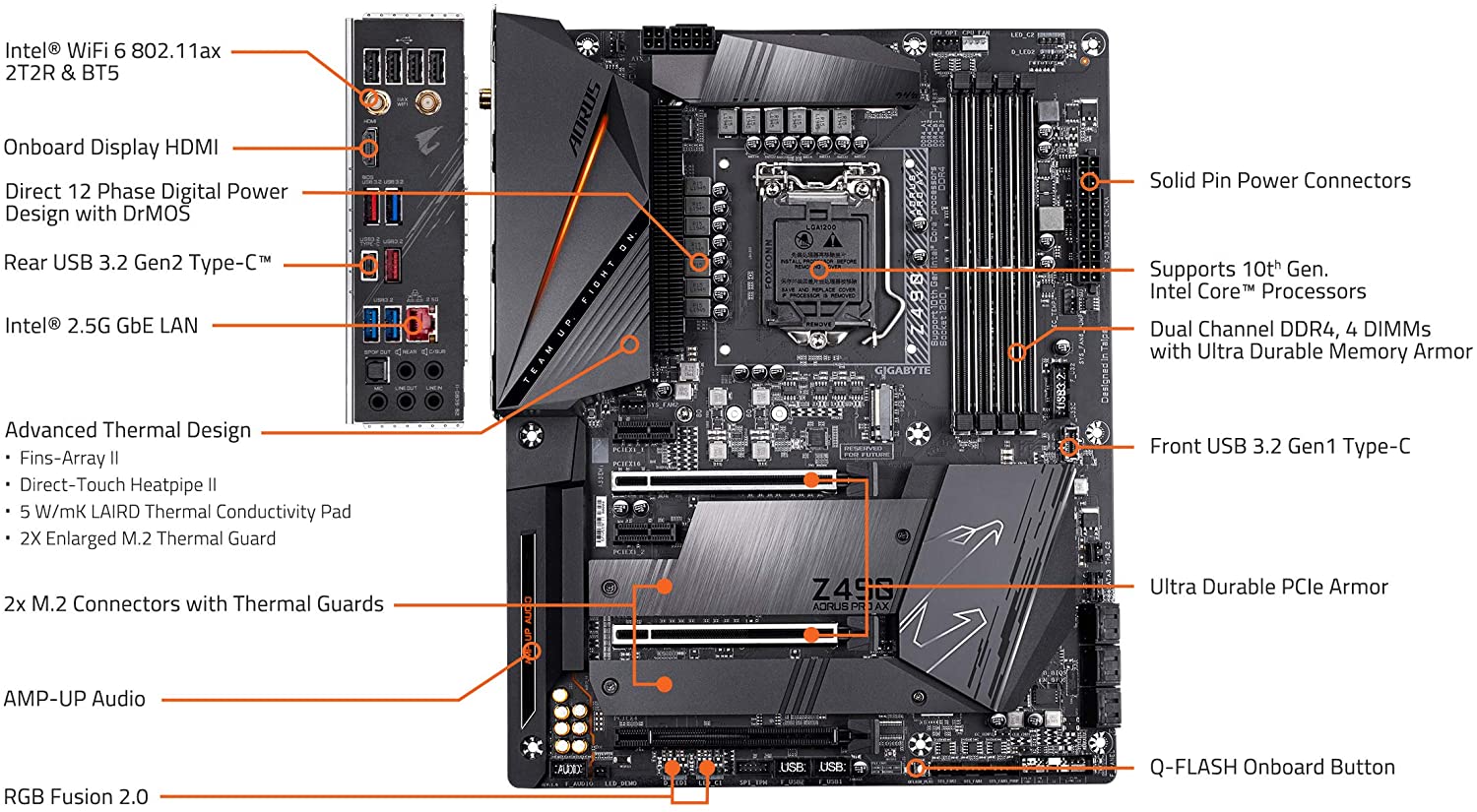
Chipset chip with 6-watt TDP got its own heatsink. During testing, we recorded the following temperature indicators:
- chipset cooling radiator — 32°C
- upper radiator cooling elements of the power subsystem — 43°C
- lower power subsystem cooling radiator — 43°C
- Power subsystem chokes — 47°C
It was not possible to check during overclocking, because there was no suitable processor, but more on that below. In general, the results indicate the high efficiency of this design of the cooling system, which indicates the correct selection of materials and their design.
Processor power subsystem uses 14-phase design with doublers on the back of the board, Intersil ISL9 chips9390 (90 A Smart Power Stage), tantalum polymer capacitors and ferrite chokes. It is capable of supplying a current of 1260 A to the processor, which will be enough for any overclocking. Also pleased with the presence of two 8-pin power connectors, a 6-layer printed circuit board, twice the amount of copper in the tracks of some layers and an Intersil ISL69269 PWM controller.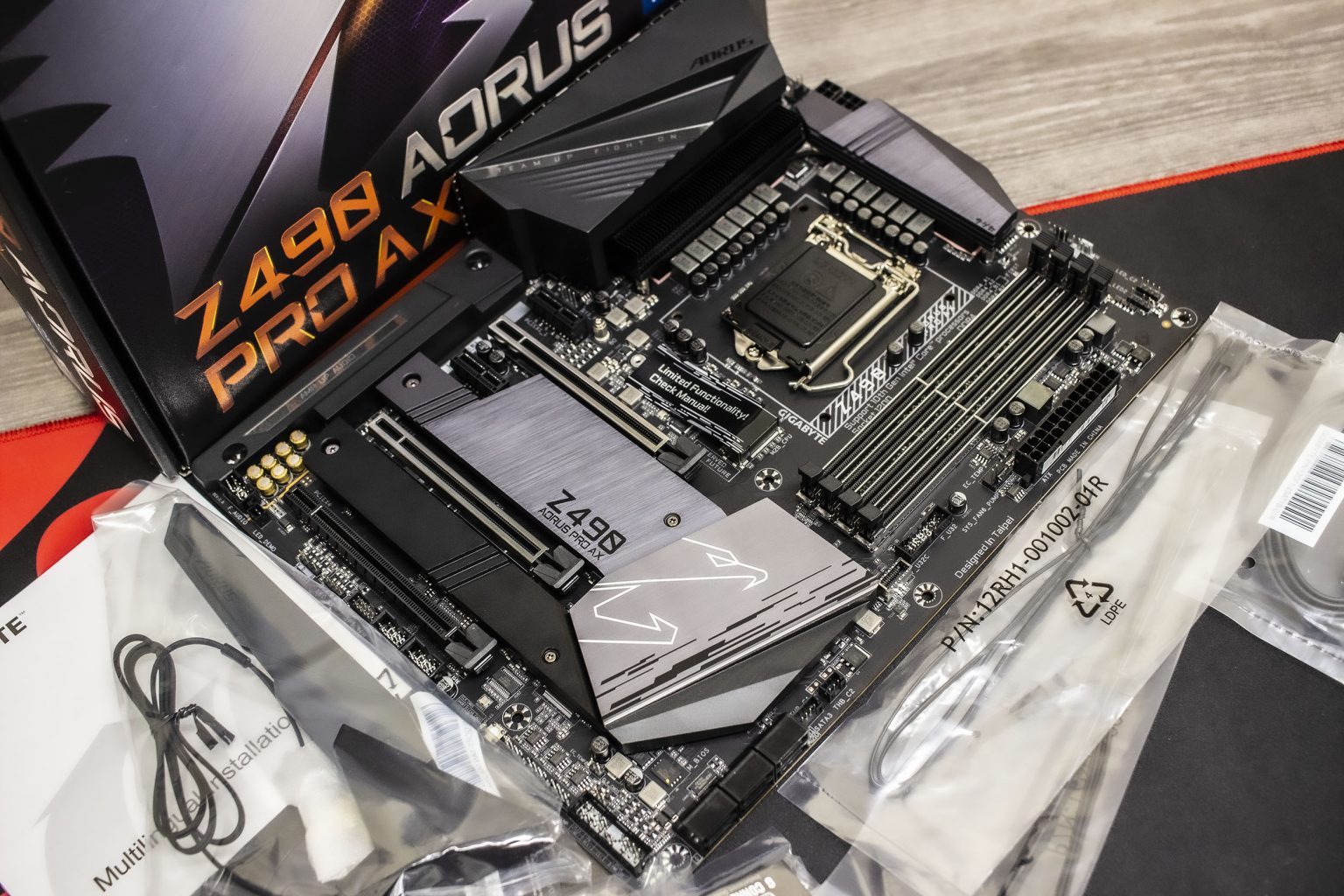
There are only three slots for expansion cards, but all are made in PCIe 3.0 x16 format with a reinforced design. True, only the first of them, which is closer to the processor socket, received 16 lines. The second one can work maximum in x8 mode, and the third — x4.
The first two PCIe slots support the installation of AMD and NVIDIA multi-graphic bundles. And they are ready to support the PCIe 4.0 standard. But the Intel Comet Lake-S processors are not ready for this. That is, you will have to wait for the release of Intel Rocket Lake-S, as is the case with the first M.2 SSD.
Implementation of the wired LAN connection is assigned to the Intel I225-V (Foxville) controller. It supports 10 / 100 / 1000 / 2500 Gbps modes. cFosSpeed technology will help with traffic prioritization.
However, there is an important problem: Intel has found a bug in the controller design that leads to the loss of data packets at the physical layer and performance degradation. This only happens with network equipment based on Netgear, Juniper and AQuantia chipsets. With solutions from Cisco, Huawei, Buffalo and Aruba, no problems were noticed.
This only happens with network equipment based on Netgear, Juniper and AQuantia chipsets. With solutions from Cisco, Huawei, Buffalo and Aruba, no problems were noticed.
Another significant advantage of the GIGABYTE Z490 AORUS MASTER board is the Intel Wi-Fi 6 AX201 module. It implements support for Bluetooth 5.0 and 802.11a/b/g/n/ac wave 2/ax standards in two frequency bands (2.4 and 5 GHz). Using the latest 802.11ax standard (Wi-Fi 6), wide 160 MHz channels are used, and the total throughput reaches 2.4 Gbps.
Motherboard Gigabyte Z490 Aorus Pro AX 1.1
Code: 00287113
Leave feedback
This item is temporarily unavailable for ordering
Compare
Compared
Favorites
To favorites
- Characteristics
-
Reviews
10 bonus per review
- The review was written by a person who bought this product in PandaShop.

- Feedback must only apply to the product purchased
- The review must be unique and must not have been previously published on the Internet.
- Feedback must be at least 100 characters long.
- The review was written by a person who bought this product in PandaShop.
Features
Characteristics
Motherboard Gigabyte Z4
6
6
6
9080EAL
9080EAL
9080EAL
9080EAL 9080EAL 9080EAL 9076 9080LAY 9080EAL 9080EAL 9076 9080EALE
90ELAY 9080ELA
?
8x/8x/4x
 5×24.4 cm
5×24.4 cm Product specifications and images of Gigabyte Z490 Aorus Pro AX 1.1 motherboard are for reference only and may differ from the actual product. We recommend that you specify the availability of the desired functions and characteristics when buying.
Reviews about
Gigabyte Z490 Aorus Pro AX 1.1
This product has no reviews yet. Be the first to leave him
write a feedback
Viewed Products
Accessories
Popular
Inexpensive first
First expensive
AMD SSD R5M240G8 (181463)
AMD SSD R5M240G8 (181463)
Form factor
M. 2 2280
2 2280
Memory type
3D NAND TLC
Maximum read speed
530
Maximum write speed
450
1 506 ₽
Buy in 1 click
Form factor
M.2 2280
Memory type
3D NAND TLC
Maximum read speed
530
Maximum write speed
450
ASRock B550 EXTREME4
ASRock B550 EXTREME4
CPU socket
AM4
Chipset
AMD B550
Form Factor
ATX
Product series
Extreme
15 875 ₽
Buy in 1 click
Processor socket
AM4
Chipset
AMD B550
Form Factor
ATX
Product series
Extreme
ASRock B550 STEEL LEGEND
ASRock B550 STEEL LEGEND
CPU socket
AM4
Chipset
AMD B550
Form Factor
ATX
Warning
Not compatible with AMD Ryzen 5 3400G and Ryzen 3 3200G
15 188 ₽
Buy in 1 click
Processor socket
AM4
Chipset
AMD B550
Form Factor
ATX
Warning
Not compatible with AMD Ryzen 5 3400G and Ryzen 3 3200G
ASRock X399M TAICHI
ASRock X399M TAICHI
CPU socket
TR4
Chipset
AMD X399
Form Factor
Micro ATX
Product Series
Taichi
29 438 ₽
Buy in 1 click
Processor socket
TR4
Chipset
AMD X399
Form Factor
Micro ATX
Product Series
Taichi
ASRock X570 PHANTOM GAMING 4
13 438 ₽
Buy in 1 click
Processor socket
AM4
Chipset
AMD X570
Form Factor
ATX
Product series
Phantom
ASRock X570 PHANTOM GAMING-ITX/TB3
21 688 ₽
Buy in 1 click
Processor socket
AM4
Chipset
AMD X570
Form Factor
Mini-ITX
Product Series
Phantom Gaming
ASRock X570 STEEL LEGEND
ASRock X570 STEEL LEGEND
CPU socket
AM4
Chipset
AMD X570
Form Factor
ATX
Product series
Steel Legend
18 438 ₽
Buy in 1 click
Processor socket
AM4
Chipset
AMD X570
Form Factor
ATX
Product series
Steel Legend
ASRock X570 TAICHI
ASRock X570 TAICHI
CPU socket
AM4
Chipset
AMD X570
Form factor
ATX
Product series
Taichi
26 875 ₽
Buy in 1 click
Processor socket
AM4
Chipset
AMD X570
Form Factor
ATX
Product series
Taichi
ASUS PRIME h510M-A /LGA1200
ASUS PRIME h510M-A /LGA1200
CPU socket
LGA1200
Chipset
Intel h510
Form Factor
Micro ATX
Product Series
Prime
6 250 ₽
Buy in 1 click
Processor socket
LGA1200
Chipset
Intel h510
Form Factor
Micro ATX
Product range
Prime
EVGA 220-G2-0550-Y2
EVGA 220-G2-0550-Y2
Product Series
SuperNOVA
Form Factor
EPS
Rated power
550
Minimum PFC value
0.

 0)
0)  0 x16 (x16 / x8+x8)
0 x16 (x16 / x8+x8)  2 Gen 2 Type-C
2 Gen 2 Type-C